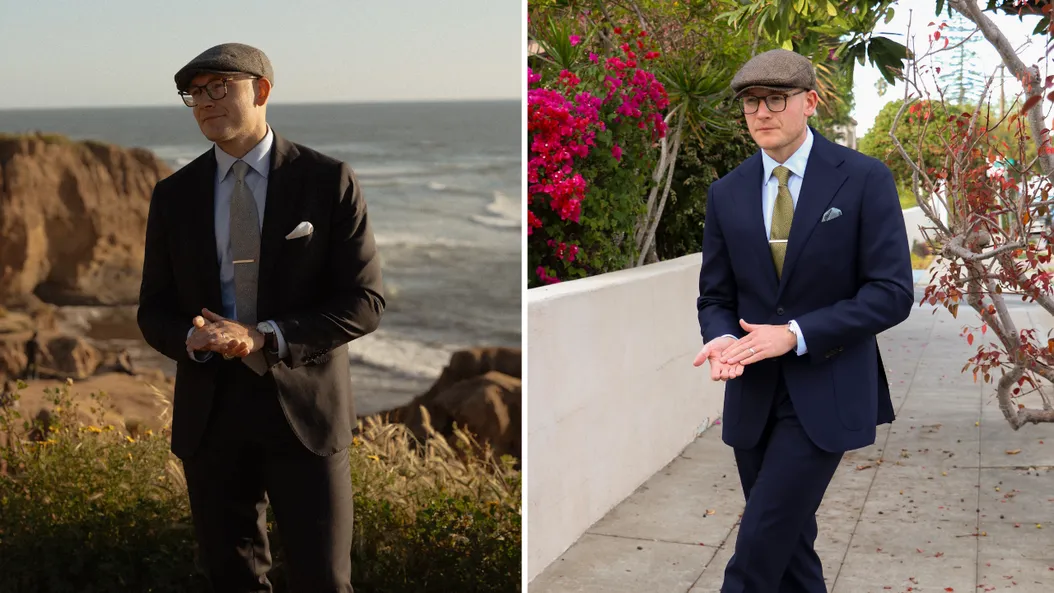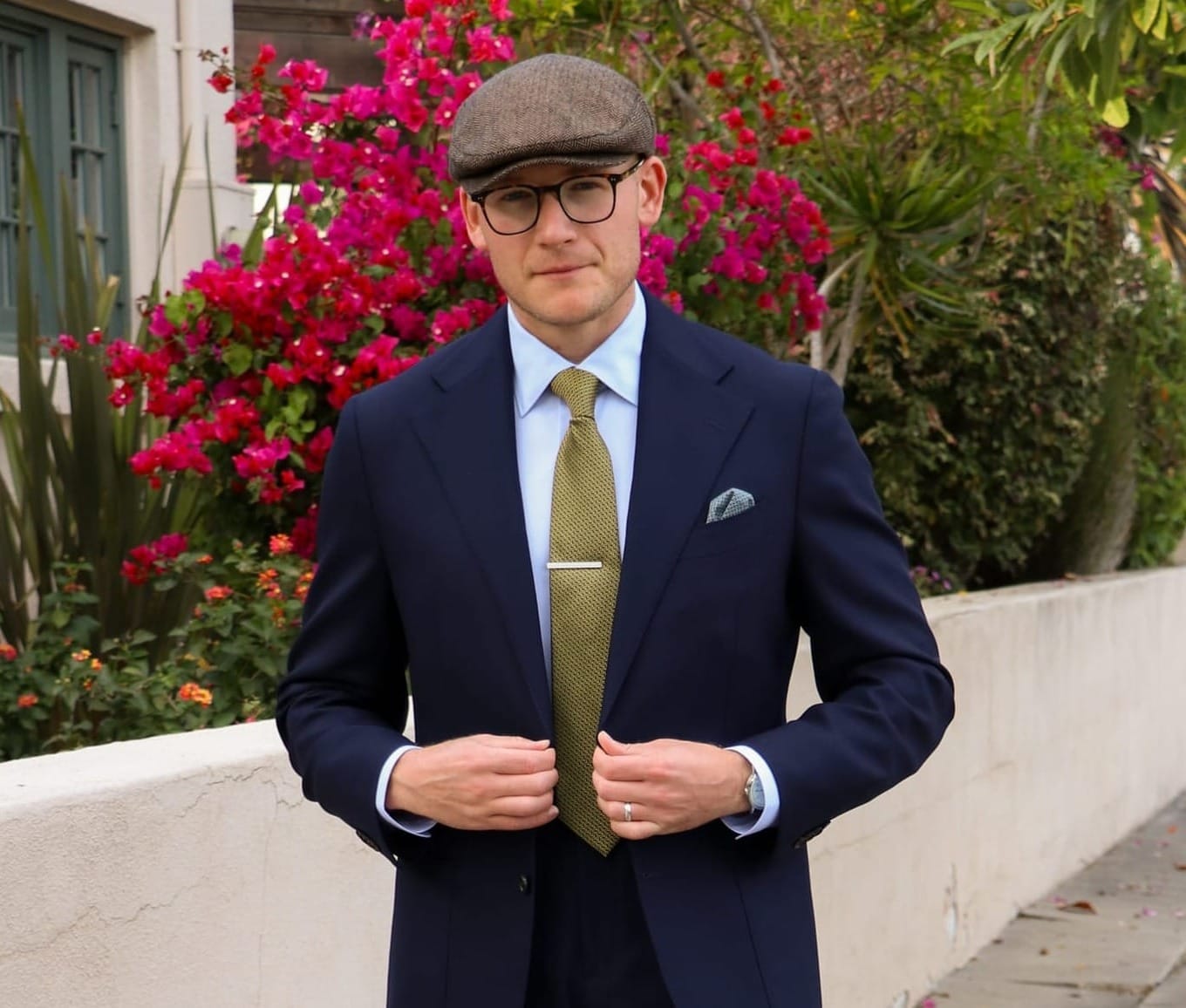
If you want to know how to buy a suit, you're in the right place.
Owning and maintaining a quality suit in your closet is essential no matter where life takes you. I understand that in today's world, especially in the United States, many men are ditching their suits for more "business casual" attire, including sport coats, blazers, chinos, casually elegant footwear, etc.
However, you'll need at least one suit, whether for a wedding, job interviews, a funeral (God forbid), or numerous "one-off" events that require a traditional suit-and-tie ensemble.
Buying a suit shouldn't be a "one and done" venture; instead, it should serve as an opportunity to build numerous outfit possibilities as a part of your gentlemanly wardrobe. The best way to do this is to give yourself options, and as we get into the details of this article, I'll offer three examples that are meant to prove a singular point:
This means the suit should work well independently, the jacket can double as a blazer or sport coat, and the pants can function as standalone dress trousers.
What’s the Difference Between a Suit Jacket, Blazer & Sport Coat?
One of menswear's most confusing and aggravating subjects is understanding the differences between suit jackets, blazers, and sport coats.
Despite their technical differences, blazers and sport coats are often conflated. Equally daunting is that many fashion-forward brands have marketed their products to confuse customers, which certainly doesn't help.
Despite this subject's seemingly pretentious nature, it is essential to understand the differences between these classic menswear pieces because you never know who's watching. The odds are that somebody around you knows the difference, and I think we can all agree that if we're trying to look put together, we ought to understand these differences to some degree.
In many cases, they become more or less appropriate depending on what you must dress for (or spend your money on).
The Suit Jacket
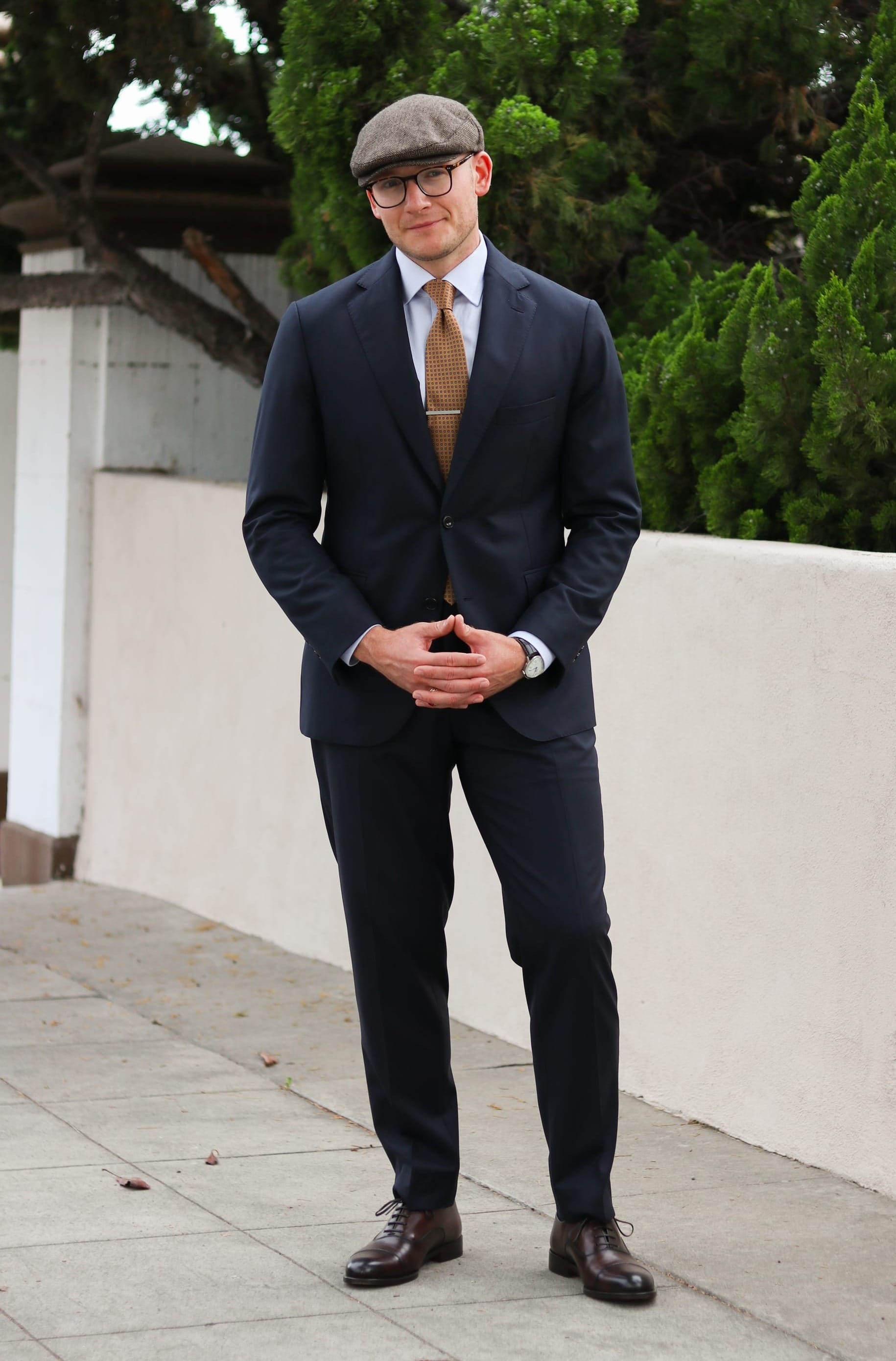
DEFINITION
Kicking things off with the most formal of the three, we have the suit jacket.
A suit is formally defined as a two-piece garment consisting of a jacket and trousers. The jacket and trousers match one another in fabric, pattern, and color. Simply put, both items are constructed from the same materials.
MATERIALS
Men's suits can be made of all sorts of fabrics; however, most are made from worsted wool, which is lighter, stronger, and finely woven, often giving off a kind of "sheen."
Suit jackets are often more structured, with a full or half-canvased lining and some shoulder padding, which adds to their overall formality.
WHEN TO WEAR
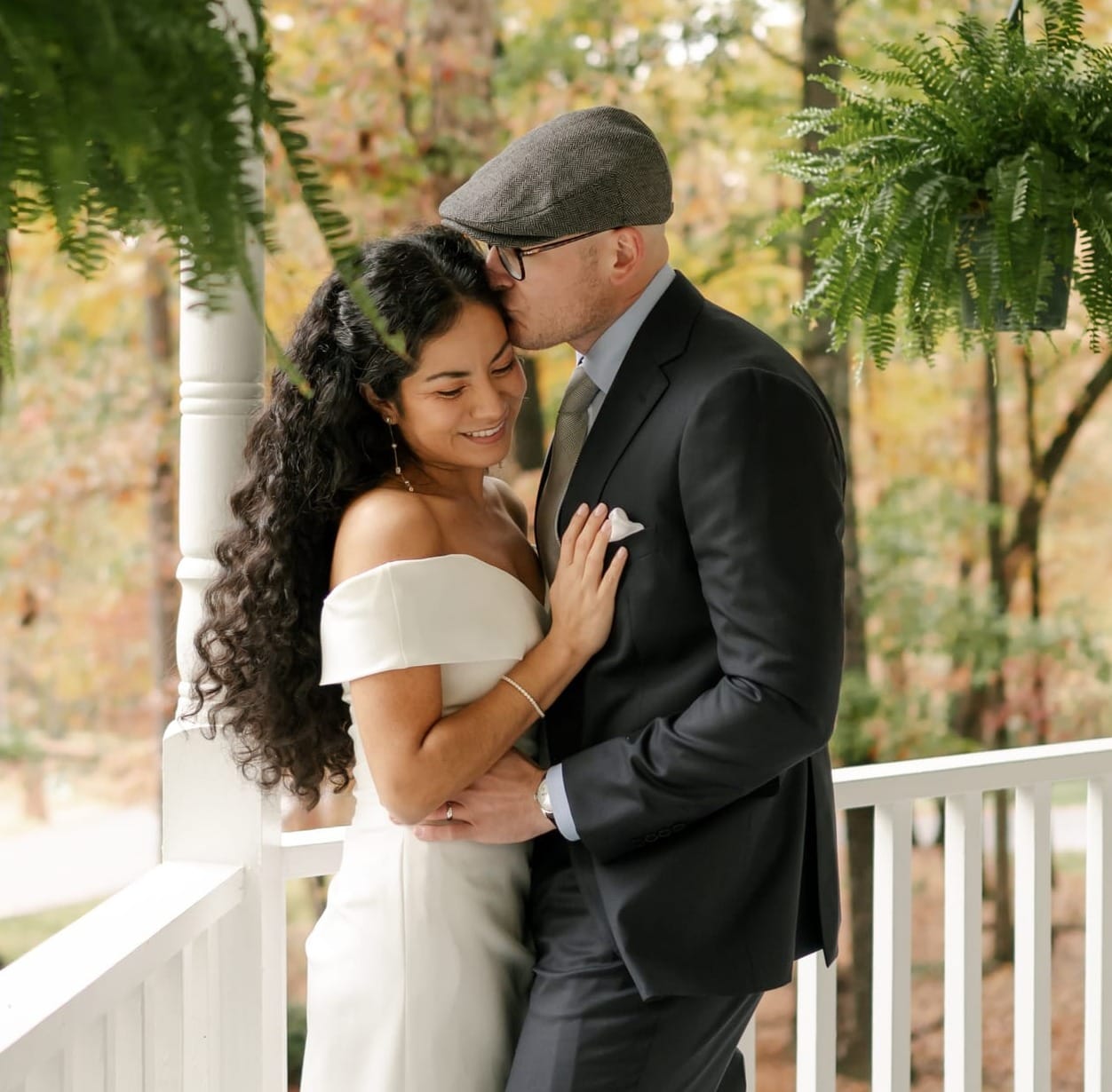
Suits should be reserved for weddings, funerals, or occupations/interviews, which call for higher standards of formal wear.
The Blazer
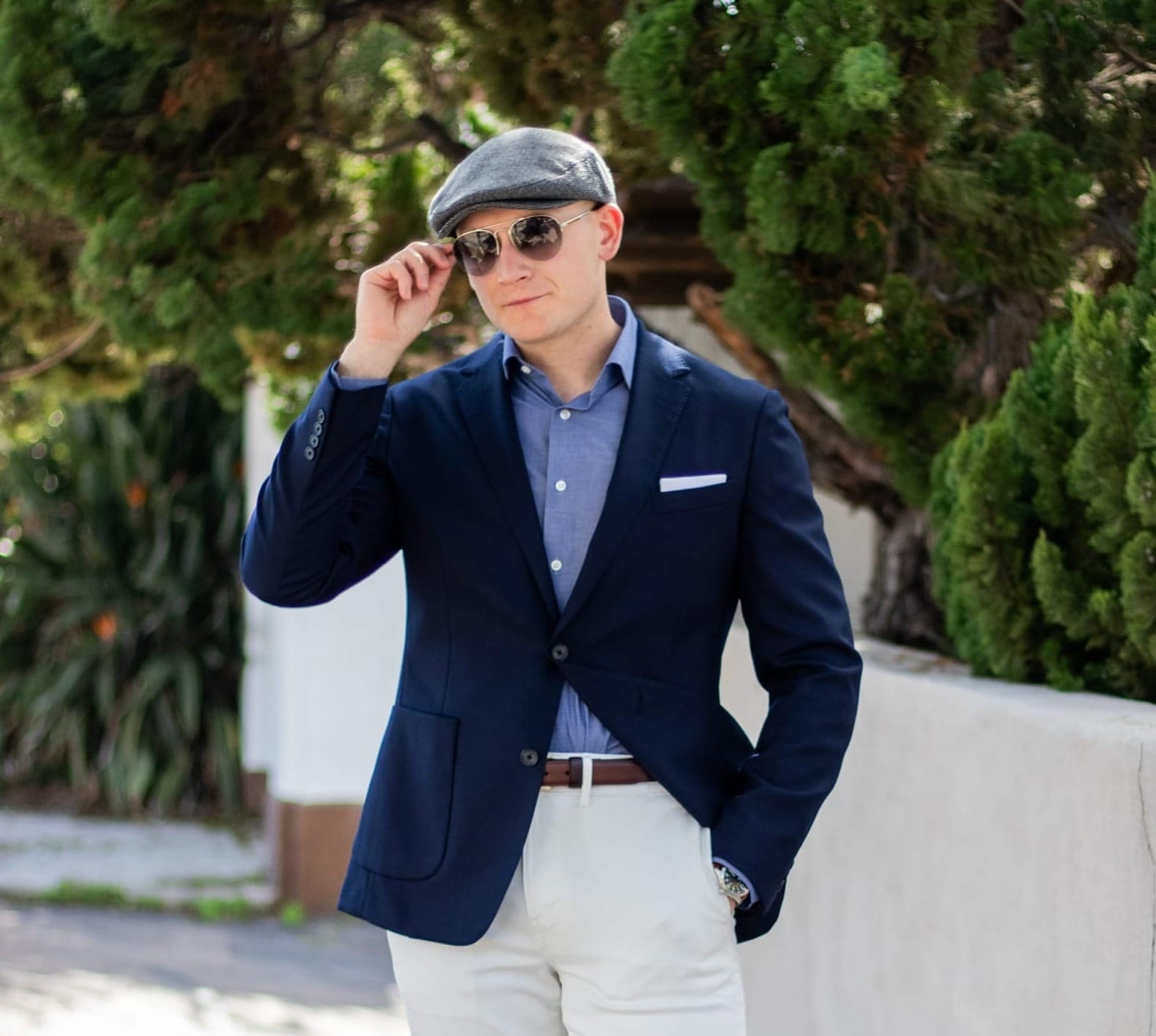
A blazer is the most specific of these three garments in that it technically must meet a particular set of criteria.
DEFINITION
A blazer fits somewhere between a suit jacket and a sport coat (the latter of which I will discuss later). It is a standalone piece with similar characteristics to typical suit jackets, such as padded shoulders and canvas constructions (though they can also be unstructured or unlined).
A blazer is fundamentally different from a suit jacket because it does not come with matching trousers. Instead, it typically has contrasting buttons (traditionally yellow brass or white pearl) and additional features that make it more casual, such as fabric with a subtle texture in navy blue.
MATERIALS
Blazers can be made of wool flannel, hopsack, etc. These materials (and those like them) don't offer the same "shiny" visage often commensurate with suit jackets made from worsted wool.
Flannel, which comes from wool or cotton, is constructed differently and is much softer, warmer, and more casual.
Hopsack is a basket-like wool weave that is much more breathable than flannel. Due to its construction, hopsack adds a more visible texture and is thus considered less formal.
PATTERNS
Blazers can be made in a few patterns, but in the purest sense, they have fewer pattern options than sport coats. They can be solid (notably navy blue), striped, or even solid colors with contrasting piping along the edges.
In the old days, many blazers possessed some ornamentation, such as a crest, but you won't find many left outside private institutions. This is where blazers are said to have gotten their name from. In old English colleges, young men in their school's odd jacket uniforms were said to have been "ablaze" when sporting the garb of their institutions.
Blazers were bold and often meant to be seen. As time passed, these flashy school jackets were adapted to be solid navy, often with the school crest sewn on the breast.
WHEN TO WEAR
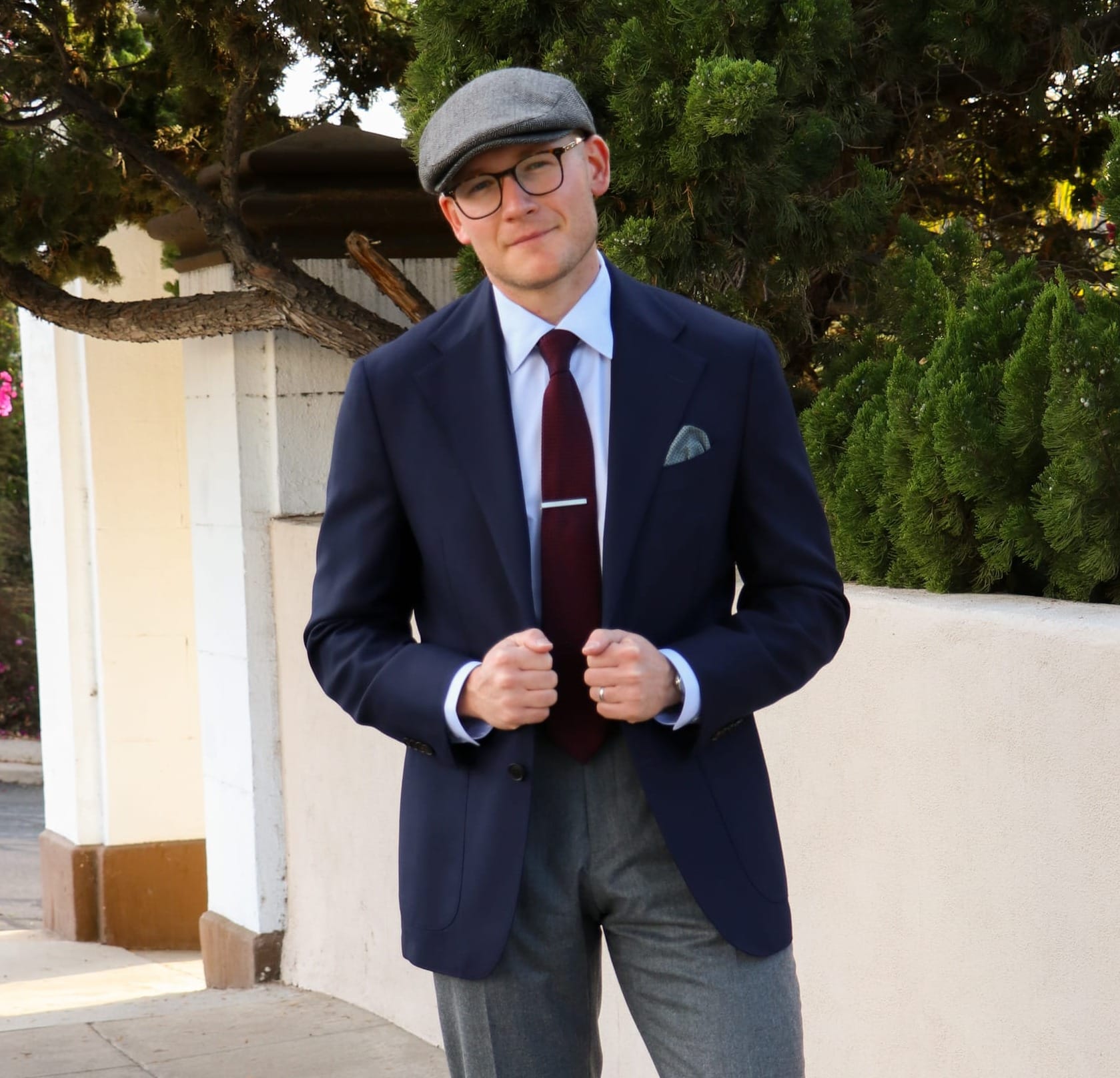
As previously mentioned, blazers are less formal than suits but still formal enough to be worn for specific occasions that warrant dressier clothes, such as networking events, business settings, dates, and even weddings (depending on the type of wedding).
Of course, no crest is sewn on by average men wearing blazers nowadays, though I'm sure you can add one if you'd like.
The Sport Coat
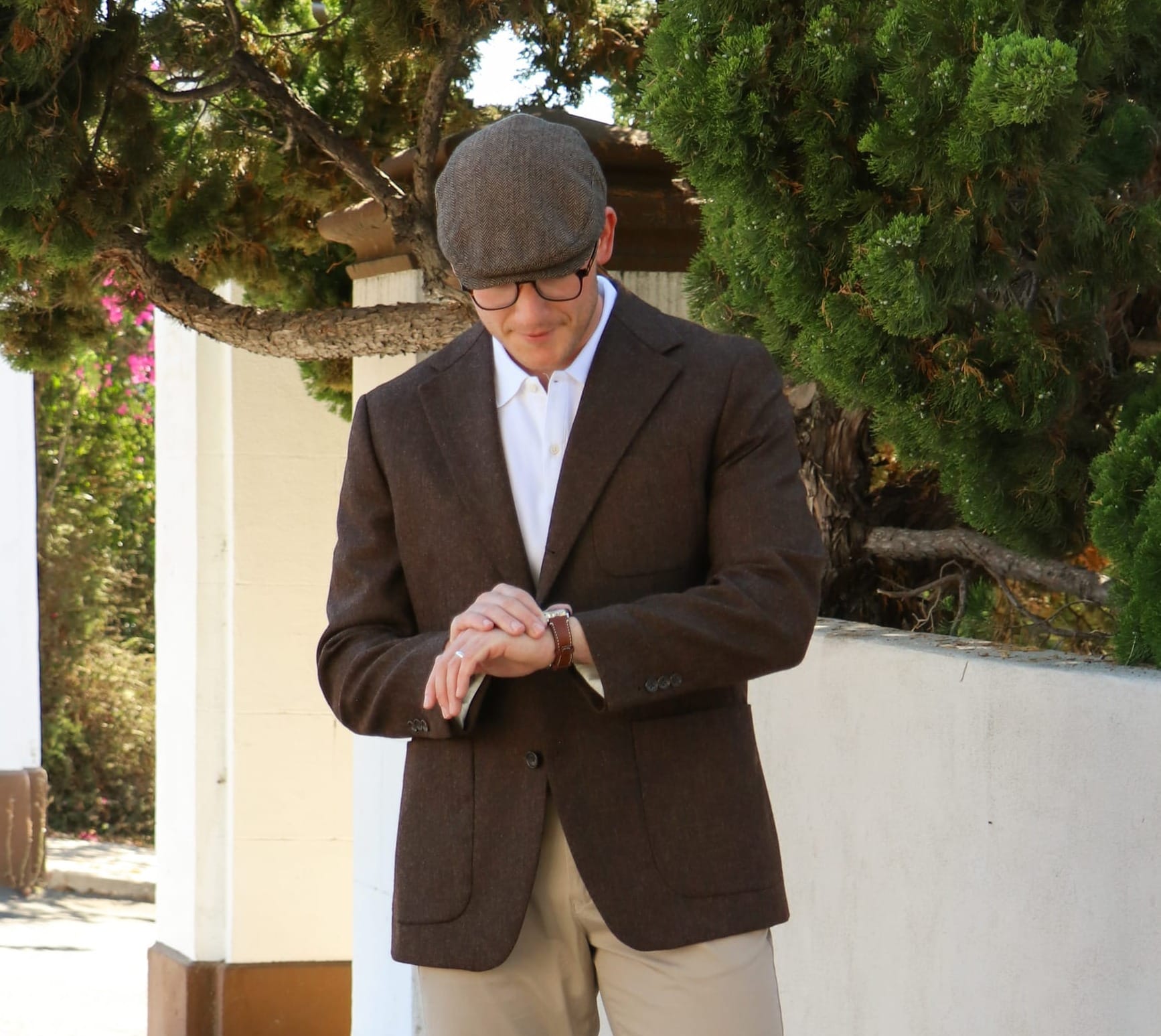
DEFINITION
The sport coat (or sports jacket) is the most casual of these three jackets. Like the blazer, it is a standalone piece. Unlike the blazer, however, the sport coat has a reasonably concise history.
All you need to know is that men of nobility traditionally wore this garment while sporting, hunting, or fishing in the countryside, hence the name.
MATERIALS
Sport coats can be made from wool, cashmere, cotton, flannel, corduroy, and other materials. Tweed, which is reasonably rugged and hardy, is a particularly sharp and classic fabric choice.
The patterns and designs make the sport coat fundamentally different from a blazer. Sport coats can have herringbone, windowpane, checked, or houndstooth patterns; the list goes on.
Sport coats are often unlined, have patched pockets, and can have canvassing or none at all, making them much more casual.
WHEN TO WEAR
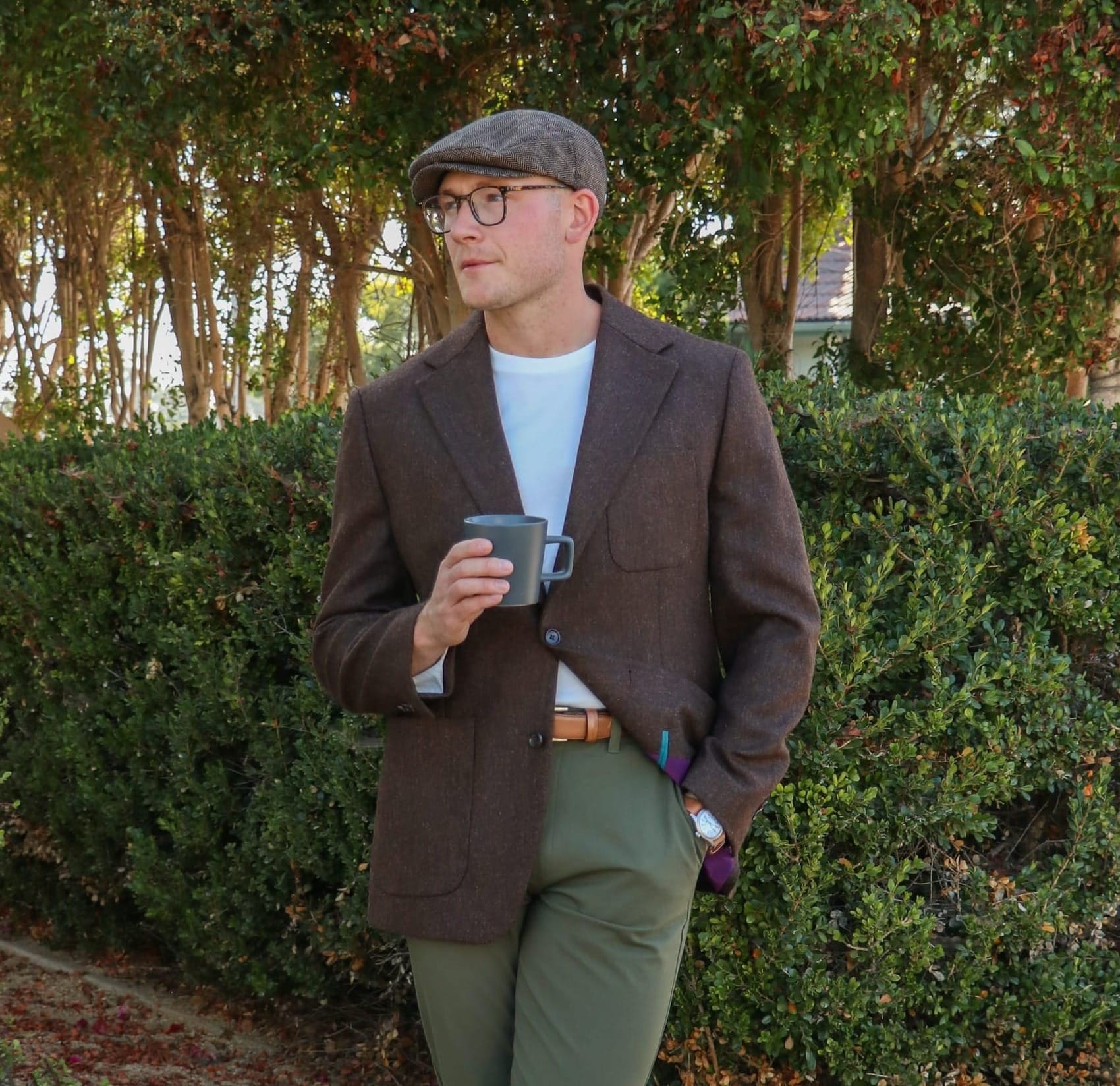
The sport coat is best worn when you want to look put together without dressing too formally. Perfect for dates, reunions, nights out with friends, or casual parties, it is the quintessential casual jacket for any gentleman who wants to be the best-dressed man in the room without trying too hard (even if he secretly is).
Types of Suits
THE BESPOKE SUIT: ($$$$$)
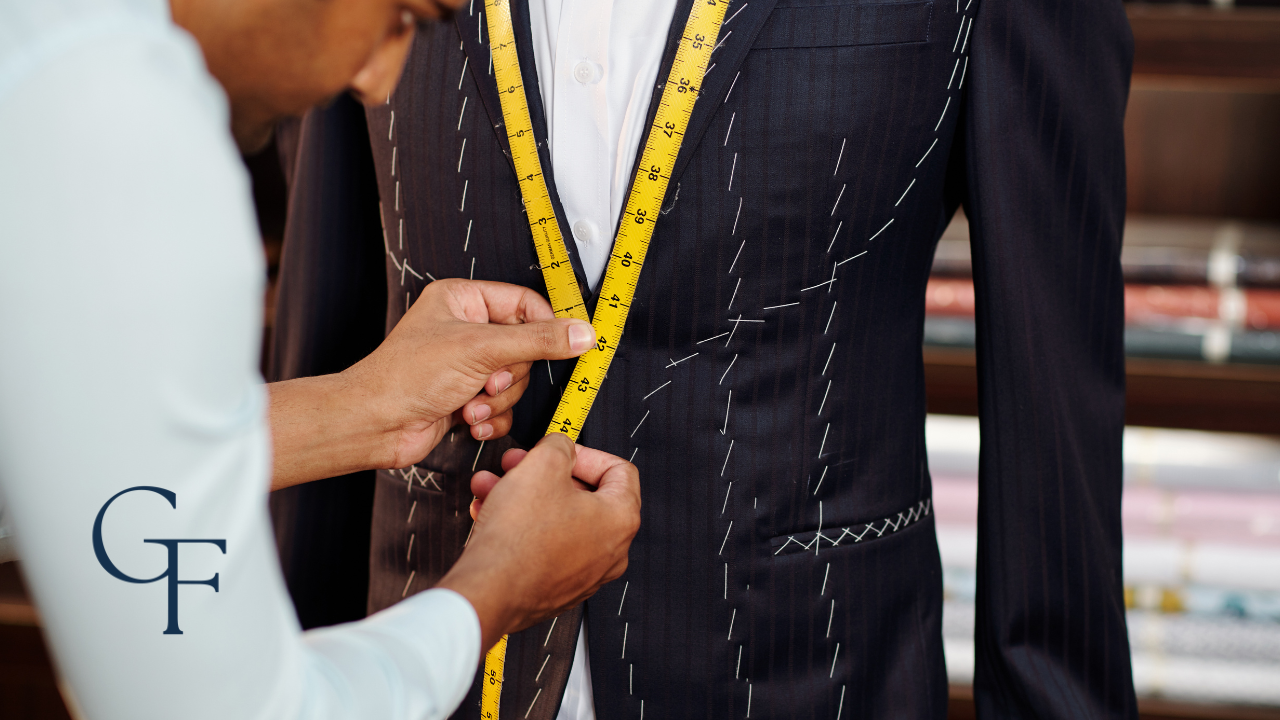
The bottom line is that custom clothing of any kind will always be expensive.
Bespoke tailoring is the pinnacle of men's suit construction and the way to build the perfect suit. I do not own a bespoke suit myself, and that is ultimately because they are costly. A bespoke suit is built for you and only you.
This process begins with fabric selection alongside a bespoke tailor. As the buyer, you will decide on the color, pattern (if any), and materials for your suit. The tailor meticulously accounts for every detail, down to your exact measurements, including the button types, button positions, lapel size/type, whether you want cuffs on your trousers, which kinds of pockets you desire, the canvassing or lining—everything (and I mean everything).
The tailor who will (ideally) serve as the one to build your suit from the ground up will take exceedingly precise measurements to account for your body's unique dimensions. So if you have a sloped shoulder, arch in your back, or even a slightly longer arm on one side of your body, the bespoke tailor will account for all of it to ensure your suit fits you like a glove.
Again, this entire experience is premium and thus costly. Anyone looking to build you a bespoke suit for "cheap" ought to be vetted for the quality and craftsmanship of their previous work.
The cost of a bespoke suit varies depending on where you buy it, but traditional bespoke tailoring can cost several thousands of dollars.
THE MADE-TO-MEASURE SUIT: ($$$) / ($$$$)
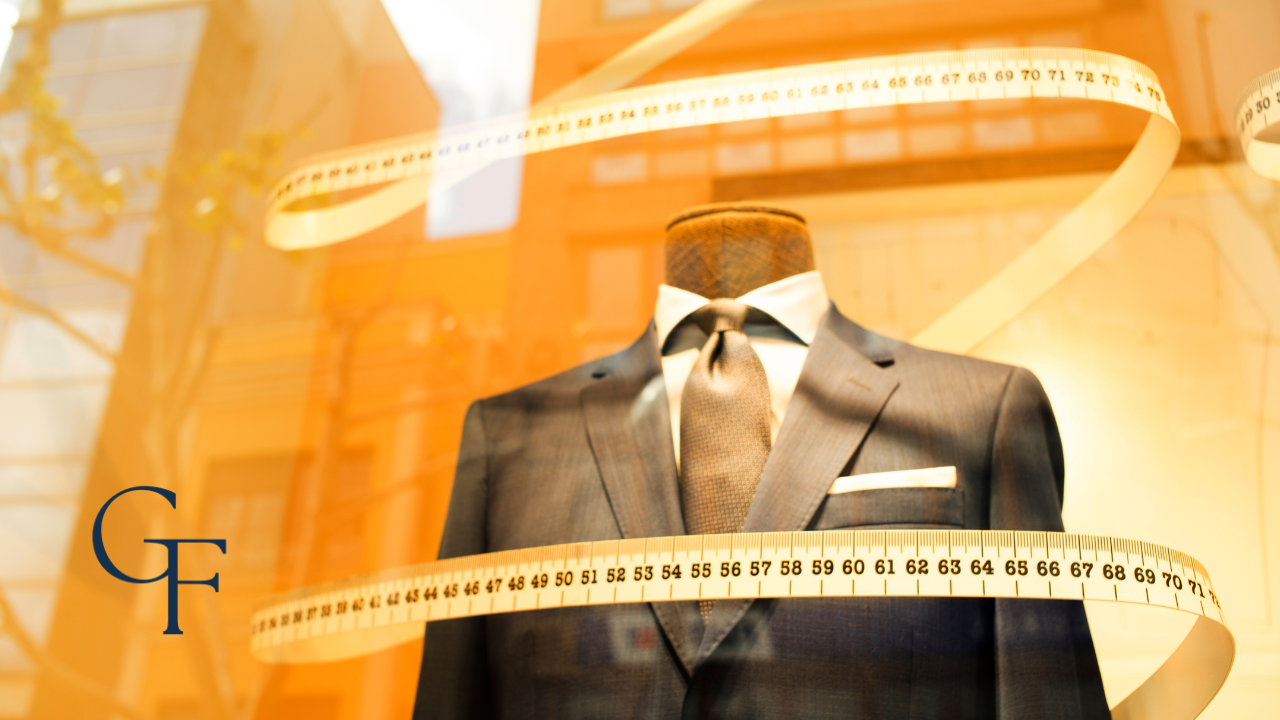
Here is where we get into a more approachable and realistic option for average men. Made-to-measure is a great way to build a high-quality suit.
It is often described as "custom," and for the most part, it is. These brands include Suit Supply's custom option, Oliver Wicks, Indochino, and Black Lapel.
Some made-to-measure brands are better than others, but the abovementioned brands are generally excellent options for getting a well-fitting suit tailored to your unique frame at reasonable prices.
The made-to-measure process is typically conducted online and begins with fabric selection and style detailing, such as inner lining types, construction for canvassing, suit sleeve length, monogramming, pocket types, button color/material, lapel type/width, etc.
The company then submits your choices for production. The suit's assemblers then take a series of pre-cut torsos, arms, and trousers in your chosen fabric and tailor them to your submitted measurements. Additional tailoring is often required to fine-tune the details and dial in the fit once your suit arrives (typically in a few weeks to over a month).
As you can imagine, this process isn't always perfect. The success or failure in receiving a well-fitting garment hinges on how accurately you have taken your measurements and how they translate to suit production.
It often takes a while to get the fit of your made-to-measure suit close to perfect. Most companies will assign you a profile that can be continuously updated to account for any changes to your measurements over time.
As with any brand, the terms and conditions for product replacement, return, or remakes will vary from place to place.
In my experience, Suit Supply and Indochino offer this particular service and do pretty well (with Suit Supply being the better option, in my opinion).
However, the ability to take advantage of this kind of service will largely depend on whether or not these brands offer a shop in your area.
THE OFF-THE-RACK SUIT: ($$) / ($$$)
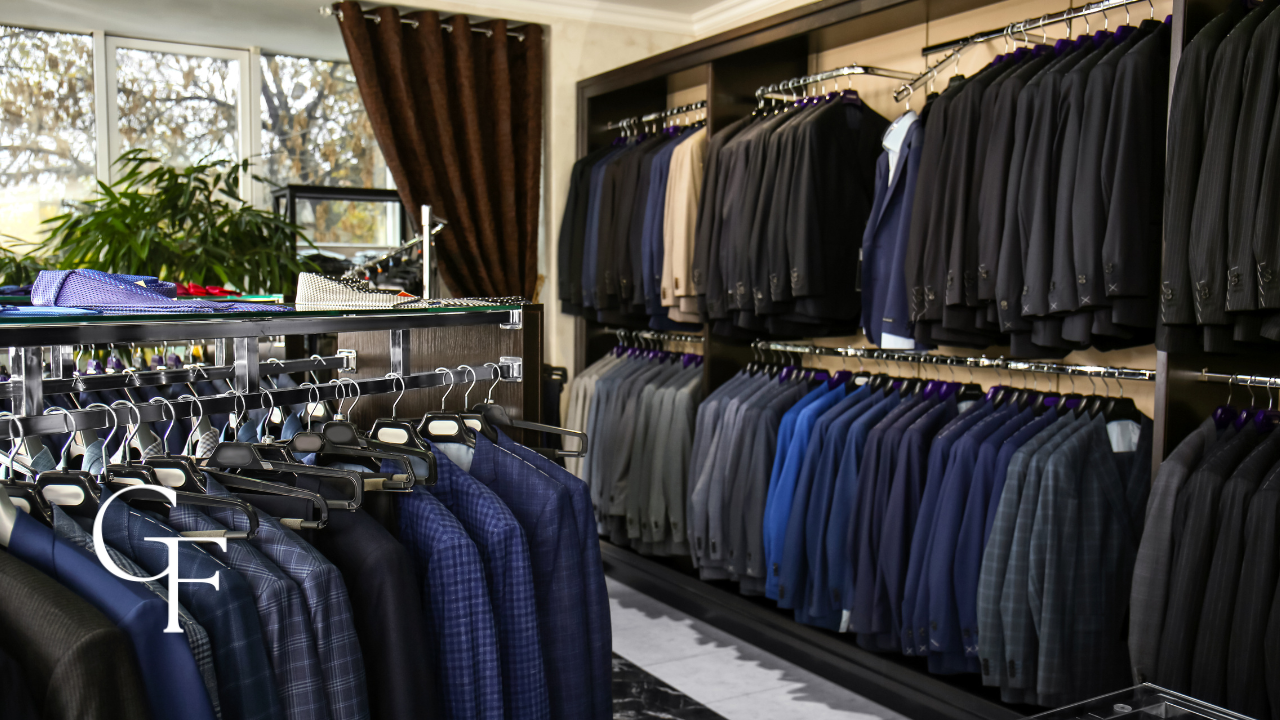
An off-the-rack suit is likely something you might already be familiar with. Think Men's Wearhouse, Macy's, and Kohl's.
The suits are just as described: you walk into the store, try on several jackets and trousers, pick what fits you, and then coordinate the tailoring separately.
Typically, off-the-rack suiting is reserved for more budget suits. Because the jackets and pants are already entirely made, it's just a matter of finding what you can fit into rather than building something that fits you.
In fact, Suit Supply began as an off-the-rack suiting company before graduating to its more recent "custom" (a.k.a. made-to-measure) program.
Suit Supply differentiates itself from traditional suiting outlets by offering premium pre-made suits with excellent fabric and pattern options. The company also has a unique team of tailors who sit in front of each store, ready to spring into action and alter suits to achieve an excellent fit for the customer.
If there isn't a Suit Supply near you, you can always find a good quality off-the-rack suit at heritage brands such as Brooks Brothers and Ralph Lauren, which offer different cuts of fabric in pre-built suit options.
Of course, you can always start shopping online with these brands, and their products can also usually be tailored for you by their teams (typically off-site).
These brands often offer free alterations as part of their customer experience. However, you'll likely need to pay for the tailoring out of pocket when purchasing most off-the-rack suits. So, before altering your suit, you'll need to find a good tailor and build an understanding and relationship with them.
Bonobos is another clothing brand that offers decent suit options for virtually any body type. I have purchased suits from them with little to no tailoring required. However, Bonobos is entirely online and has very few physical shops, which only serve as "guide shops" where customers can get up close and personal with the material.
Sadly, you cannot walk out of these Bonobos stores with any clothing, so you'll have to buy online after trying clothes in-store to get an idea of the sizing.
Getting Your Measurements Right With Made-To-Measure

I won't attempt to restate everything from that guide in this post because it's undoubtedly lengthy enough as is.
Nowadays, any man can invest in an outstanding suit option from made-to-measure brands. I think this is where the average guy should focus his attention when attempting to construct a well-made suit that can fit his needs, whether in the workplace or throughout life.
Here is a quick list of what to look for when getting measured for a made-to-measure suit:
- Take measurements accurately to ensure a good fit, including chest, waist, and inseam. Defer to guide videos (ideally provided by the company you're ordering your suit from) or utilize any available staff if you can access a physical shop.
- Use a measuring tape to get precise measurements, and consider getting a trustworthy friend or well-trained tailor to help.
- Understand the different suit measurements, including jacket, sleeve, and pant length. Don't just focus on what's "typical" or "trendy." Focus on what looks flattering and will make you most comfortable.
- To ensure the best fit, familiarize yourself with the company's suit-size chart. If no such chart exists, contact customer service or an employee and discuss it with them.
- Consider your body type and choose a fit style that flatters your frame. If you're not sure what that means, read this guide here.
Choosing the Right Suit Type
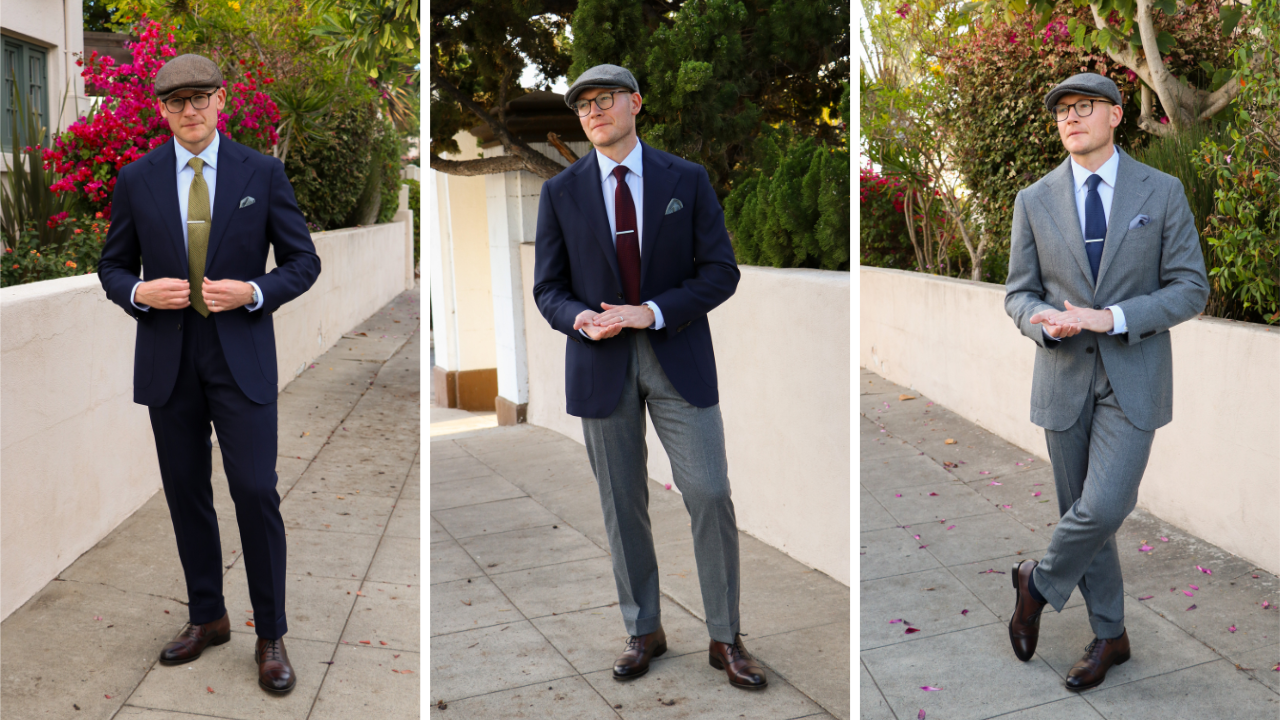
MAXIMIZE VERSATILITY
As I stated at the beginning of this guide, every man must have at least one suit in his closet for the events that will undoubtedly require its wear. The best way to do this is to build or purchase a suit (ideally made-to-measure) that can be divided into effective suit separates.
This means that not only will you have a great suit, but also a jacket that can serve as either a blazer or sport coat, as well as a nice dressy pair of trousers that can stand alone without the inclusion of the jacket itself.
This philosophy will help you expand your styling options when shopping for your first suit.
SELECTING THE RIGHT FABRIC
The fabric of your chosen suit will ultimately determine how versatile of an option it will be for you. As mentioned, worsted wool is often synonymous with a conventional suit, providing an apparent "sheen" or "shininess" that gives it a smooth and elegant glow.
While this often looks definitive for a suit, we can run into trouble if we break up the jacket and pants and pair them with more casual pieces such as chinos, jeans, etc.
You'll often find that men who do this usually can't pull it off because it appears they are wearing an orphaned suit jacket.
Even to the untrained eye, something just looks "off" with a look like this. Know what I mean? If not, just know that many people can, even if they aren't sure how to describe it.
We must pay close attention to the fabric we choose before wearing (or building) our suit. The jacket and trousers must complement the fabrics of other garments, such as chinos, jeans, corduroy, linen, flannel, and tweed.
We achieve this by avoiding a suit made from worsted wool and opting for a suit fabric with a subtle, bold, or apparent texture.
Example #1: Navy Blue Wool Hopsack Suit
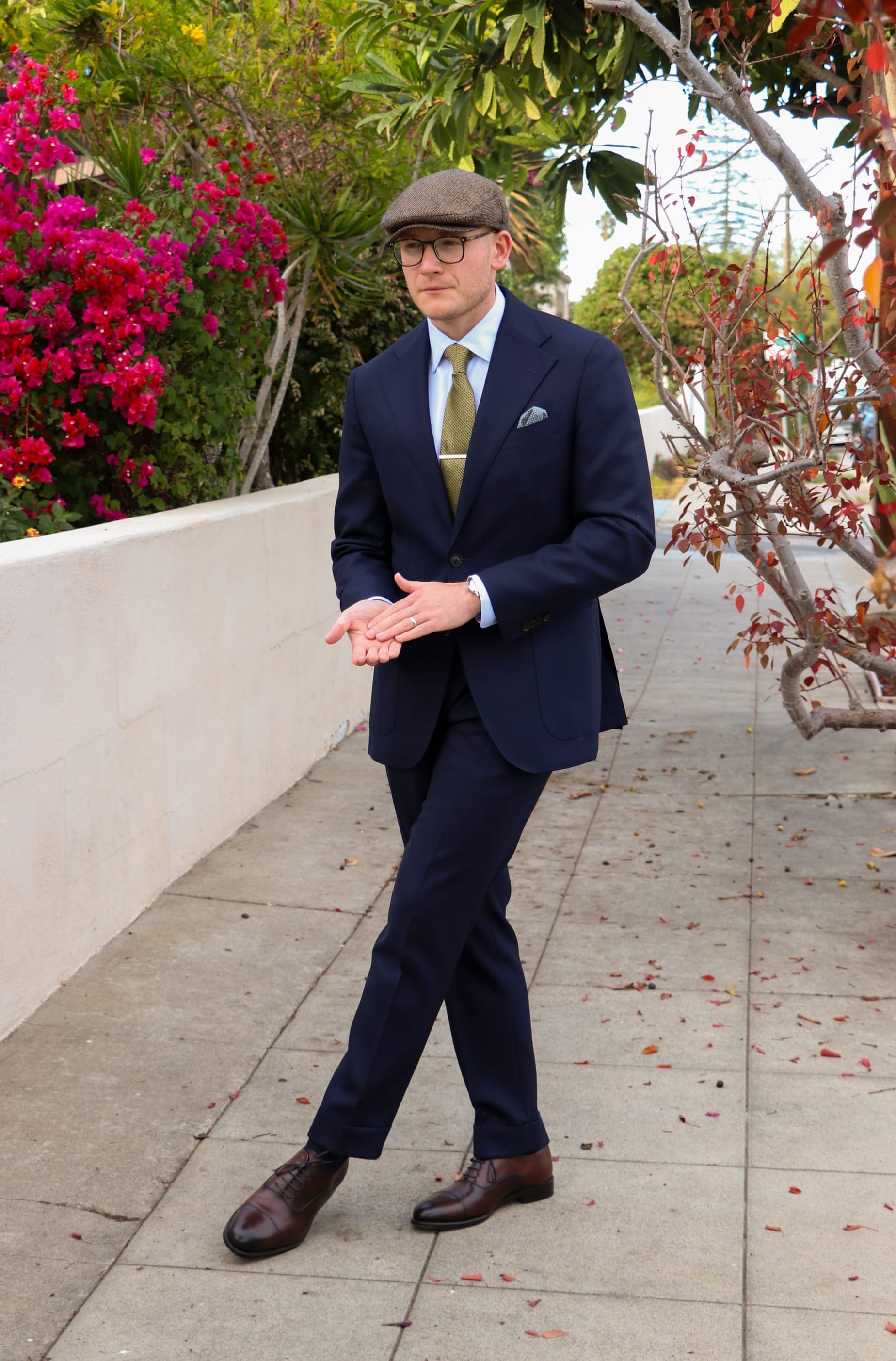
You can't ever go wrong with a classic navy suit.
Hopsack's basket-like weave offers a brilliant yet subtle texture. This means it can pair very well with other garments with an apparent texture (e.g., denim, cotton twill, corduroy, linen, etc.).
The way wool is woven for hopsack also makes it highly breathable. This means it can be very effective as a lightweight and breezy fabric in the spring and summer months while utilizing its subtle texturing significantly in the fall and winter.
Being able to wear fabrics like this all year round makes a four-season fabric what it is: one that can be worn during all four seasons, whether for comfort or style. As you can see from the example above, a navy blue hopsack suit looks regal in complete form.
NAVY BLAZER & WOOL TROUSER SEPARATES
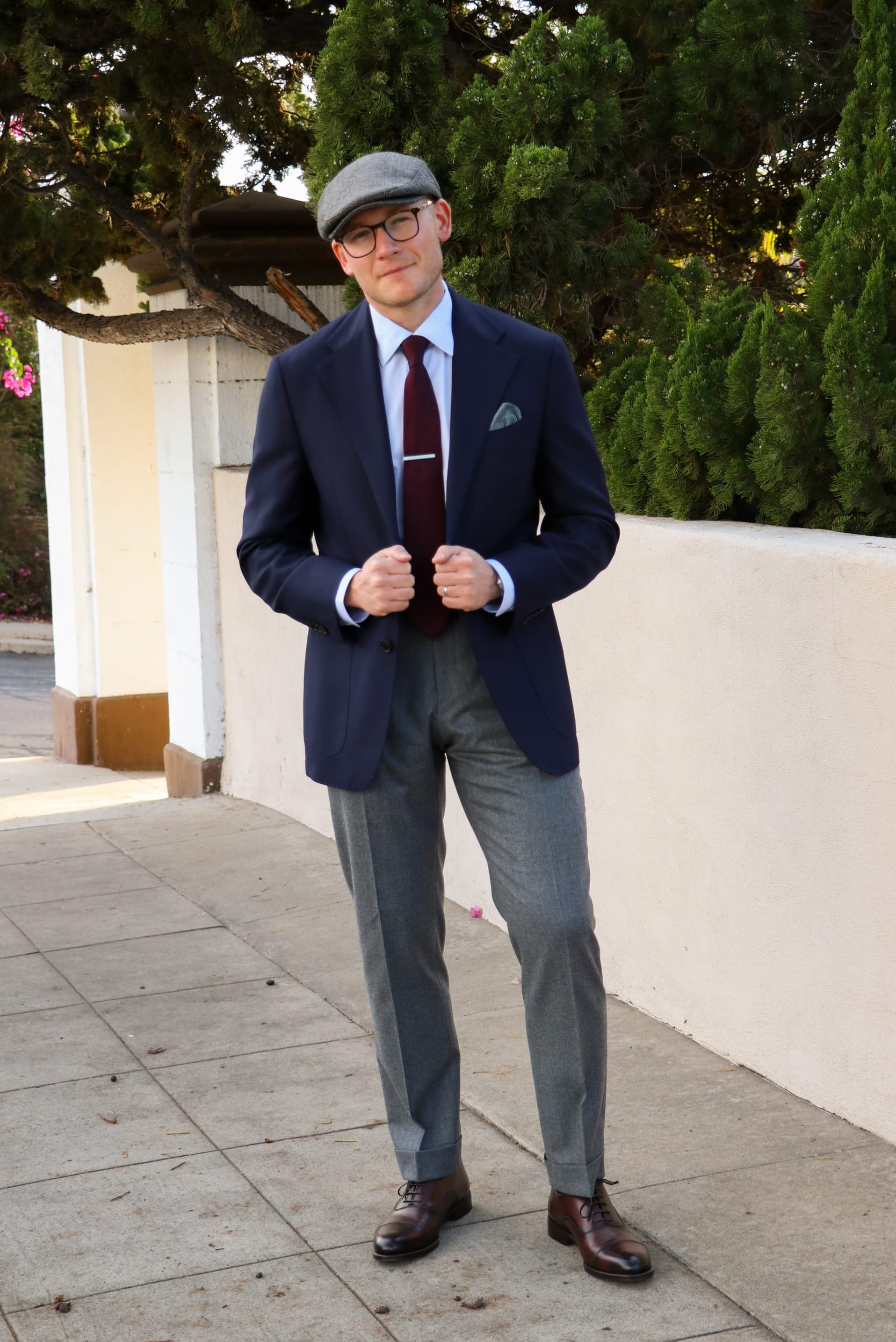
Another benefit of a navy hopsack suit is that the jacket meets all of the niche criteria for a blazer. You've got your classic navy-blue color, made from wool in a weave that provides texture, contrasting buttons of some sort (here I have them in a brilliant brown horn material), and to tie everything together, I opted for patched pockets on my suit, enabling for me to dress it down.
For those who don't know, patched pockets are always more casual than jetted or flap pockets. Details like this may not seem all that important, but they add much character to your outfit. They can often serve as an apparent reminder to the viewer that you aren't wearing a traditional suit but rather something meant to be dressed down to fit the occasion.
A classic navy blazer looks excellent with a wide variety of denim jeans, chino pants, corduroy trousers, and wool dress pants.
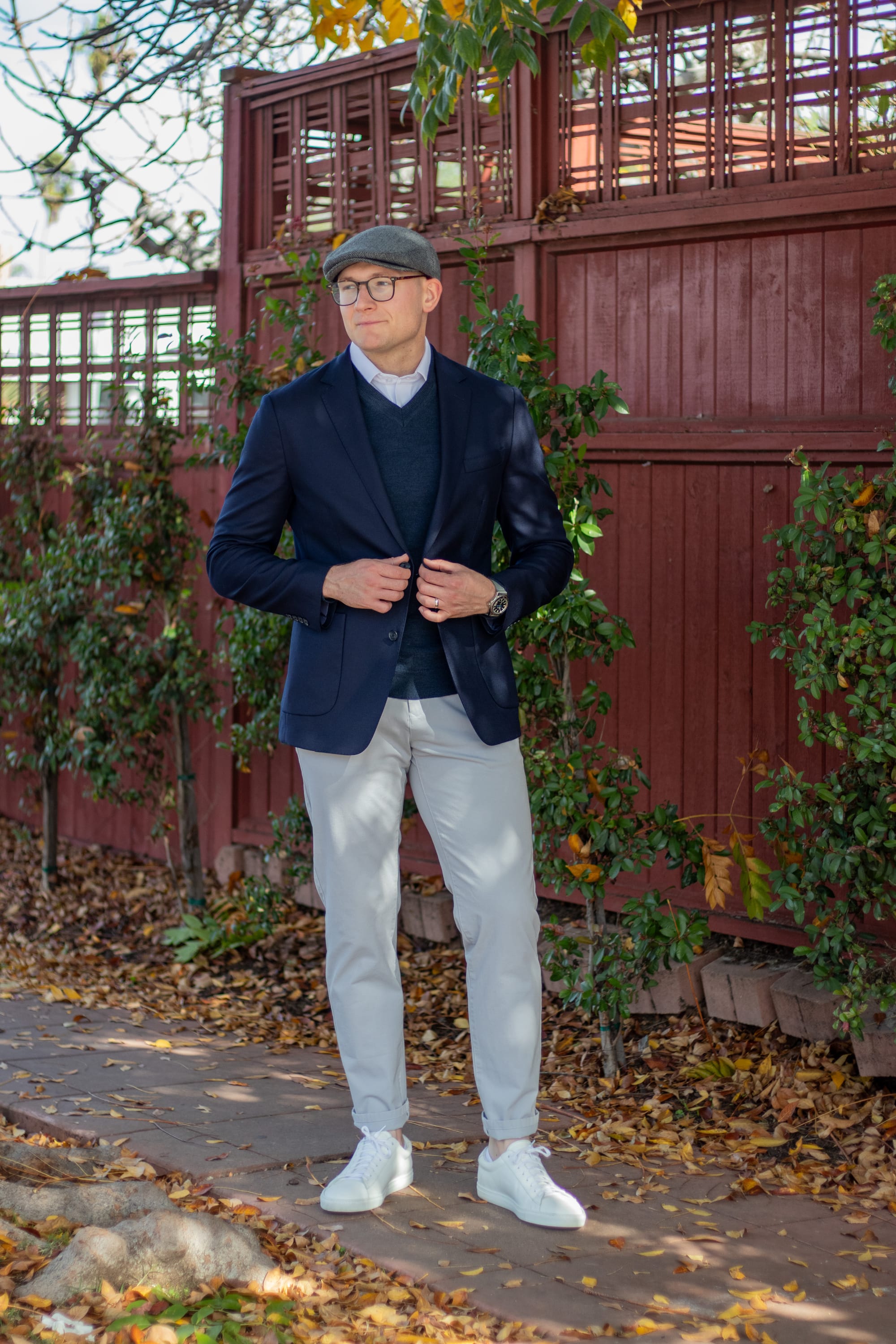

The navy hopsack wool dress pants look excellent with other sport coats or alone.
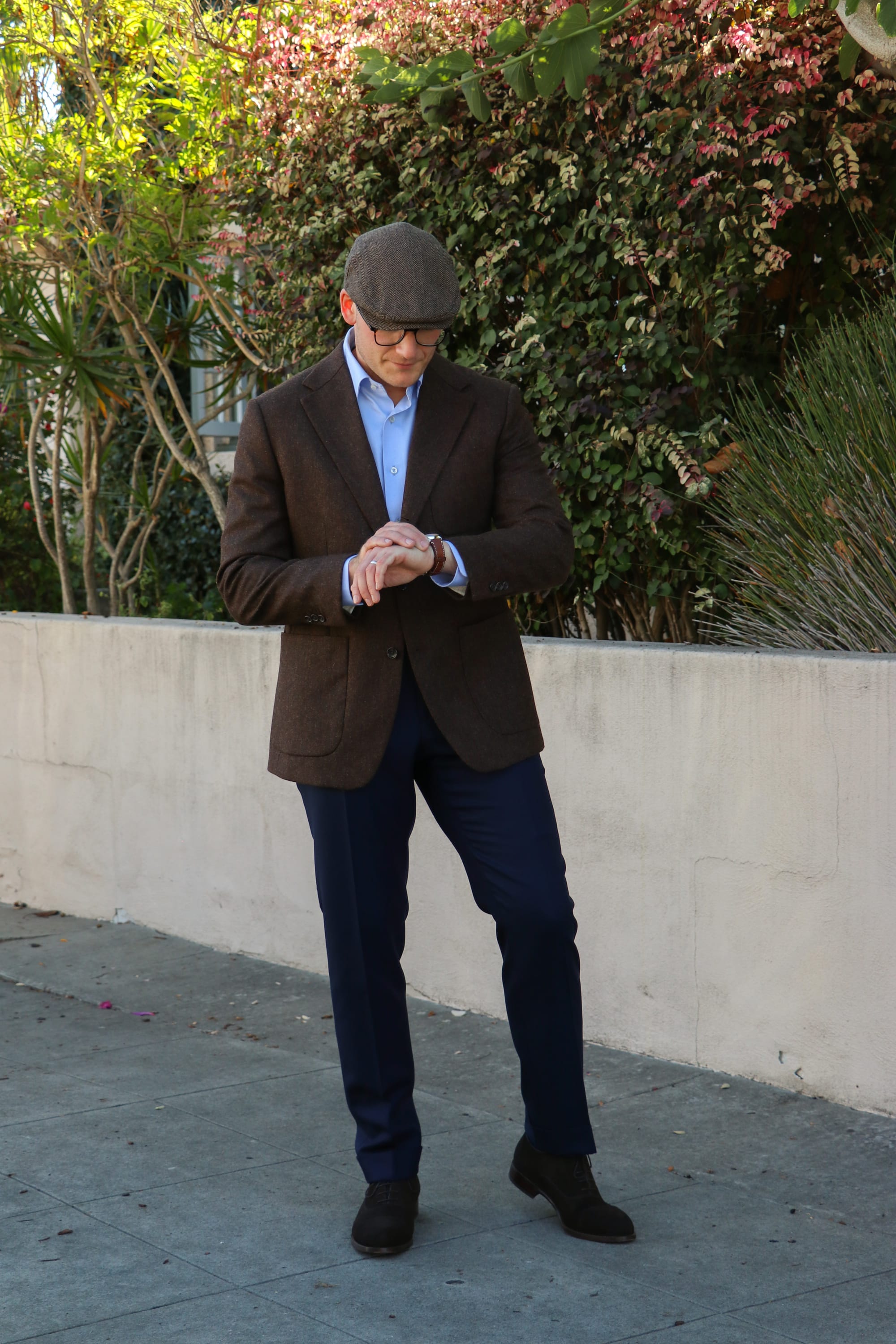
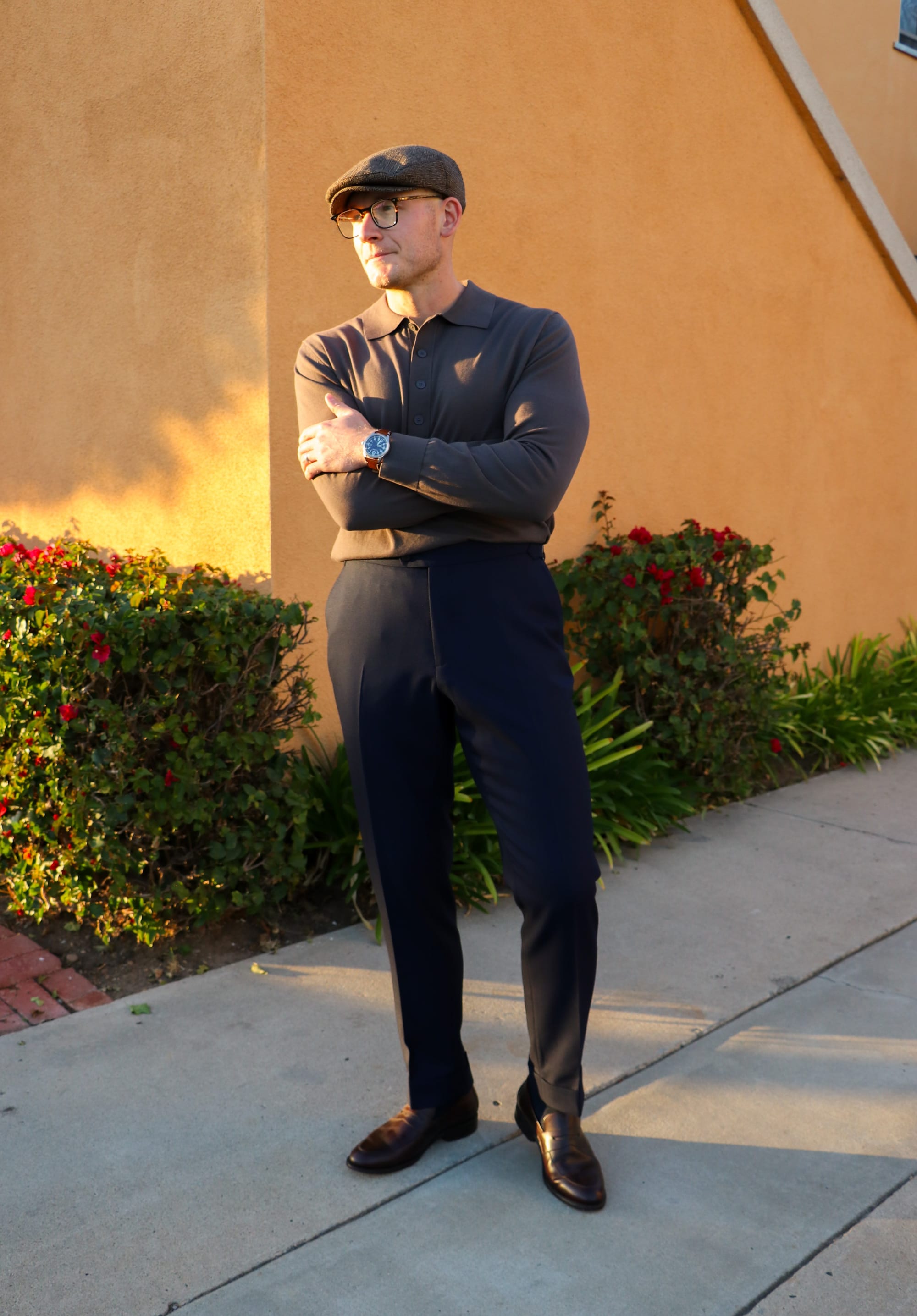
Example #2: Mid-Gray Wool Flannel Suit
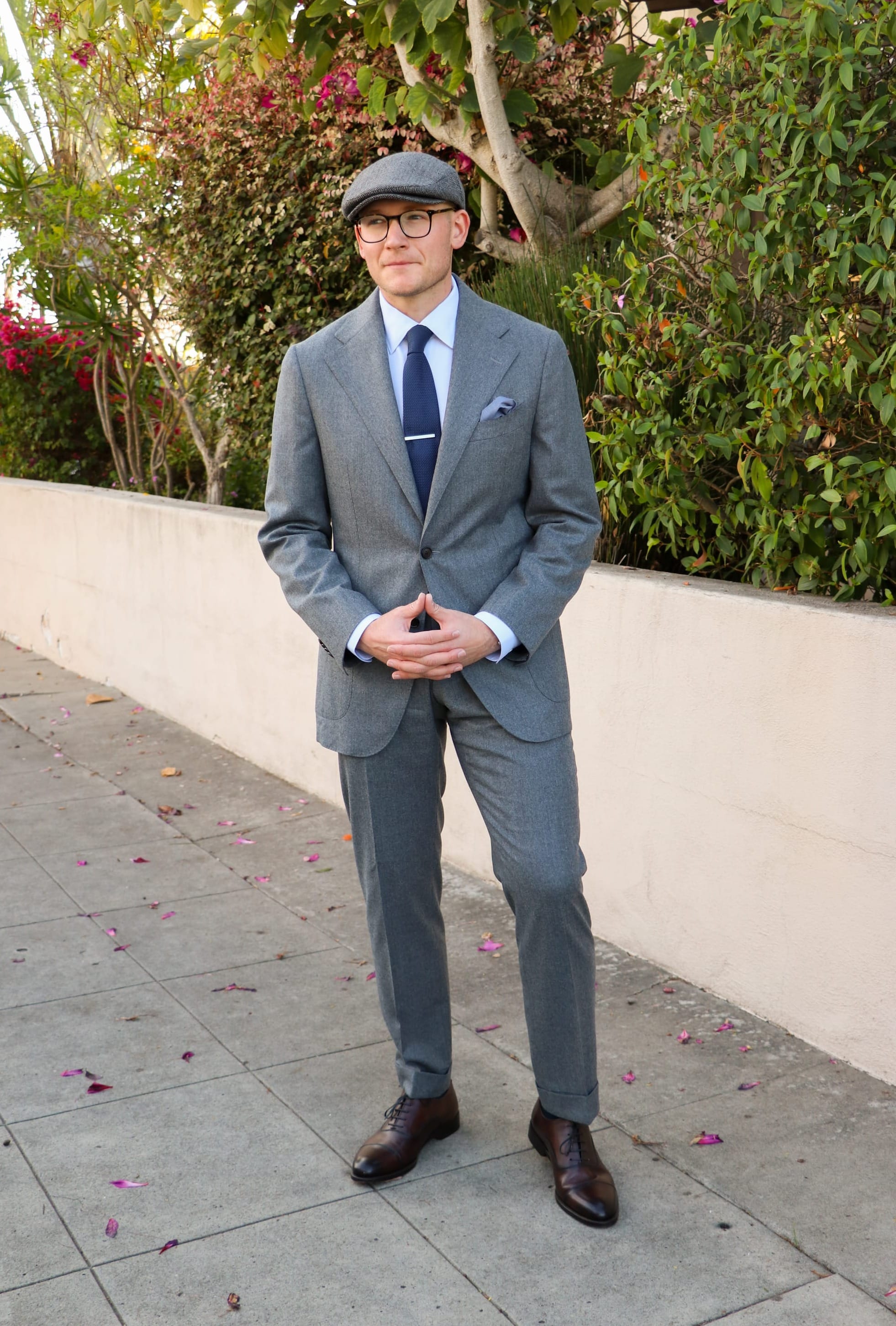
Flannel is a much cozier fabric often reserved for fall and winter. While it can work fine for spring and summer, it's worth clarifying that it works better during the colder seasons. Flannel is not a four-season fabric like the previously mentioned hopsack material, but it is still a highly versatile option.
With all that said, the same basic principles apply to a mid-gray flannel suit as they do to the classic navy hopsack suit. With this particular option, you have a jacket that doubles as a sport coat (not quite a blazer, definitionally speaking) and a pair of wool flannel dress trousers that look outstanding on their own.
GRAY SPORT COAT & FLANNEL TROUSER SEPARATES

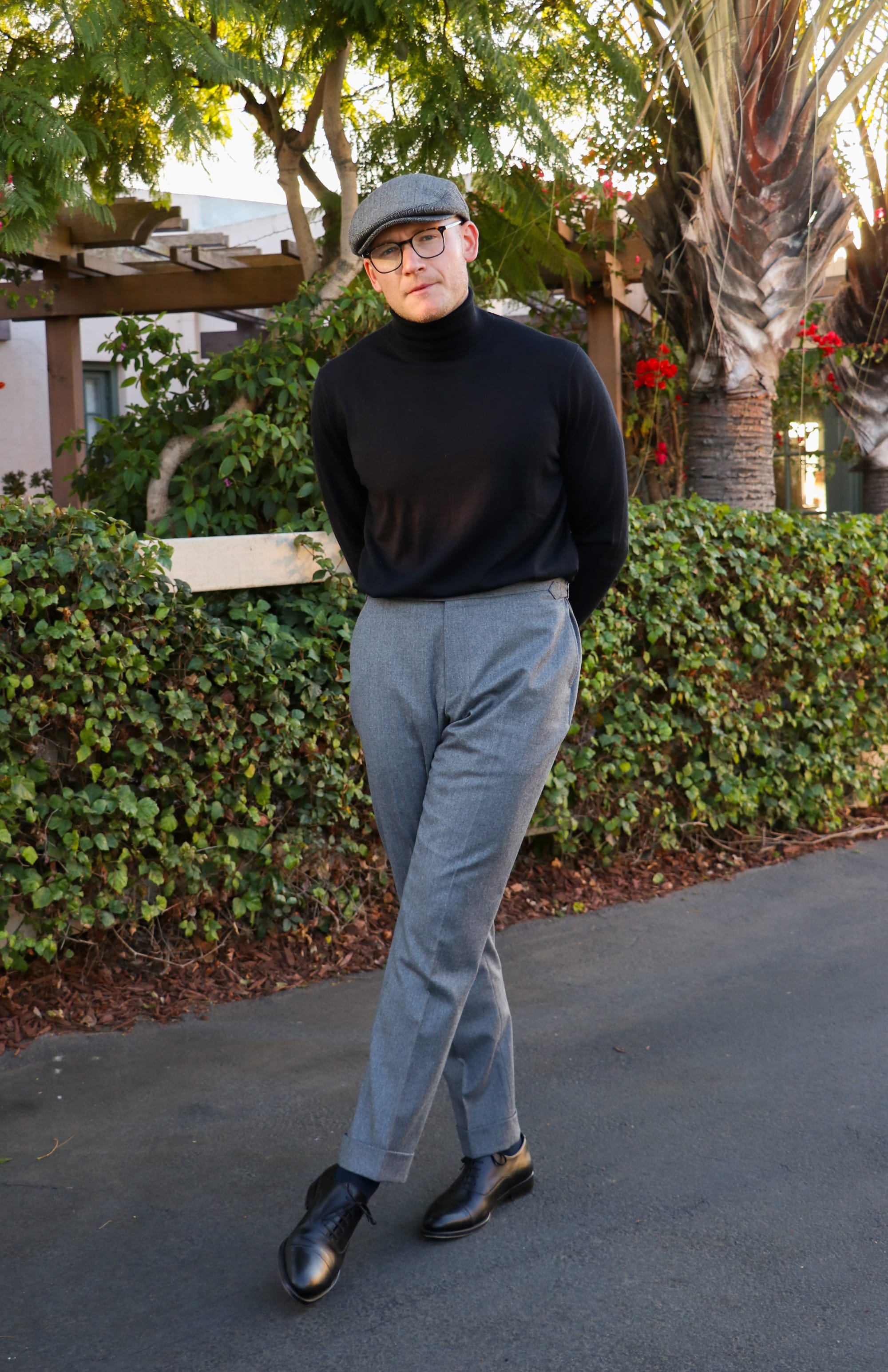
A gray flannel sport coat looks fantastic when paired with dark-wash jeans and boots, and the wool flannel trousers look classic and timeless as a standalone piece (especially during the holidays).
Of course, if you happen to have both (like me), you can always wear flannel dress pants from your suit and a classic navy blazer from your other suit to achieve a classic business casual menswear uniform.
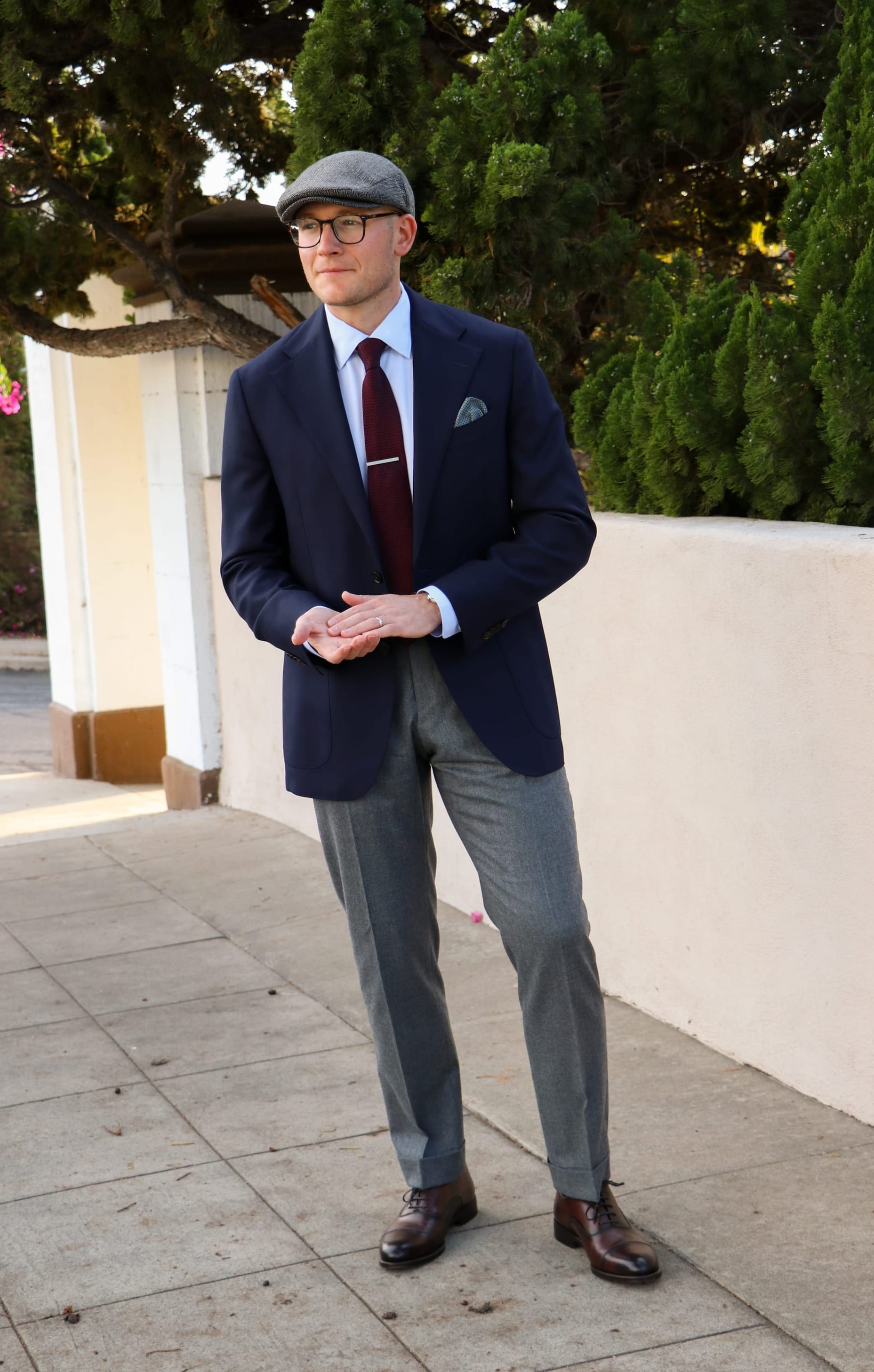
Example #3: Brown Wool Tweed Suit
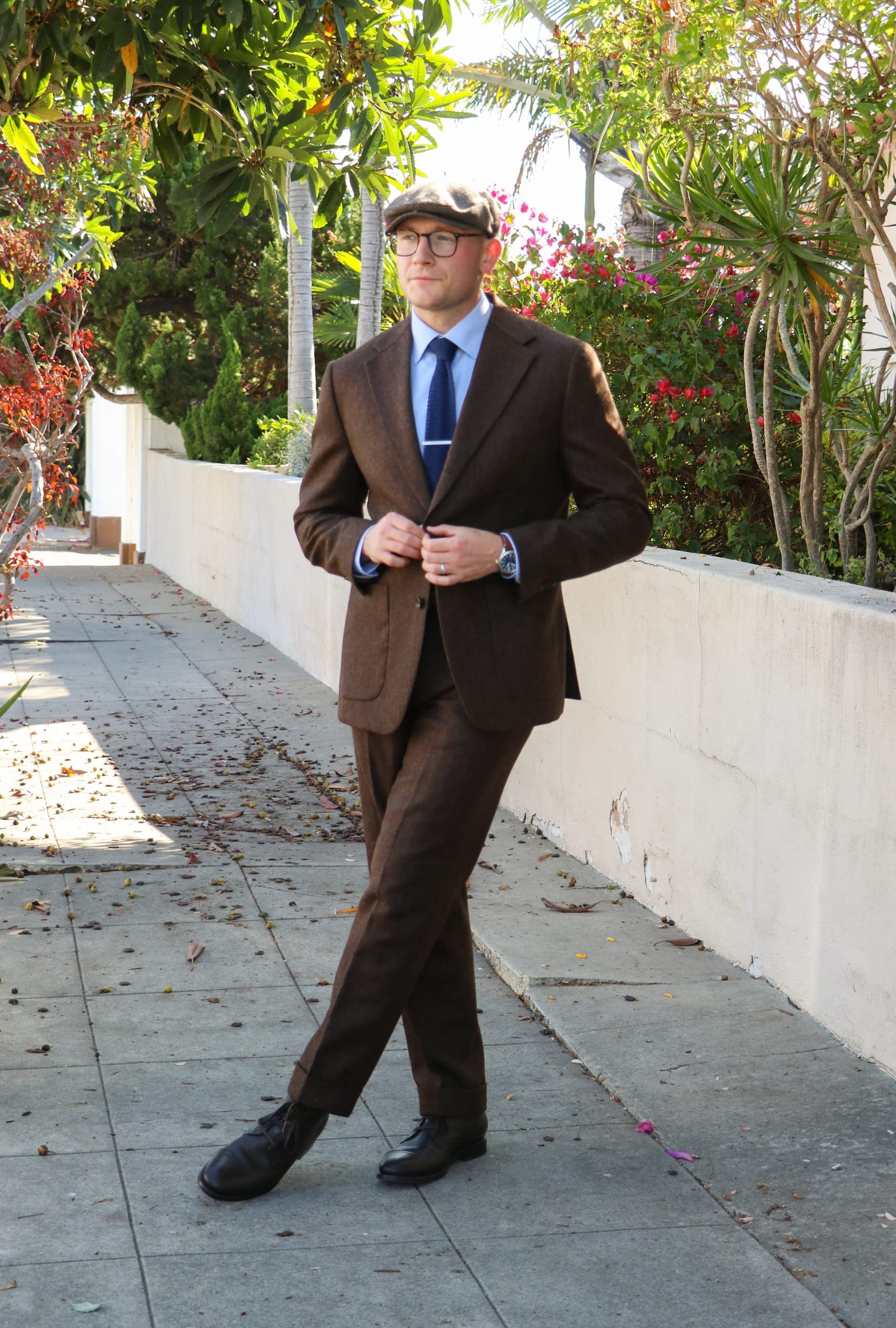
Call it "old-fashioned" if you like, but a tweed suit is a casual and elegant way to add supreme texture to your wardrobe. Though it might not be for everyone, a brown suit of any fabric type is highly versatile and a seriously underutilized color.
Tweed is much heavier and lends itself well to the fall and winter months (though I find use for it all year round). Tweed is exceptionally warm (making it more of a brisk-season fabric) and can come in various patterns and colors, opening up numerous options for the wearer to express their unique personality.
BROWN SPORT COAT & TWEED TROUSER SEPARATES
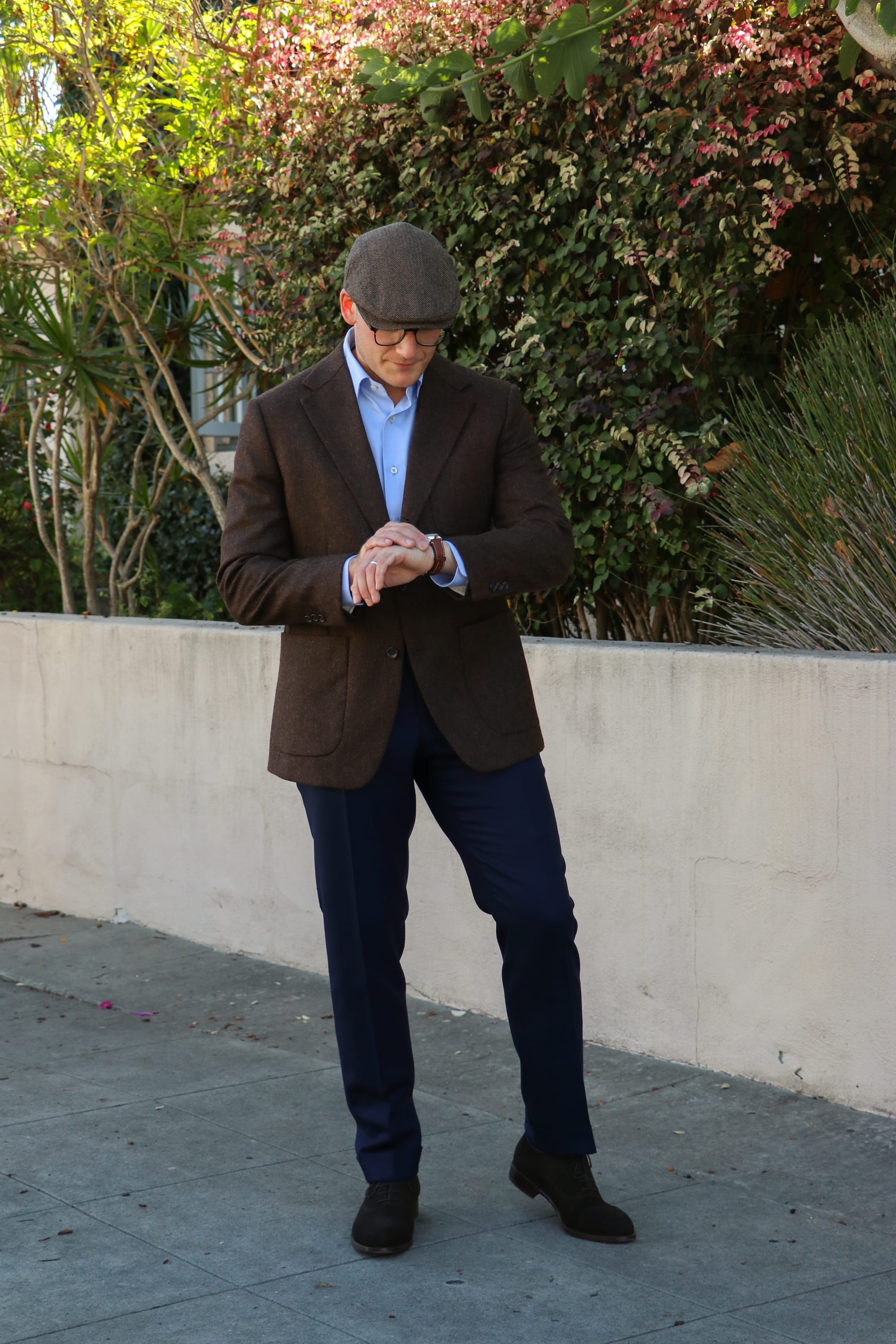
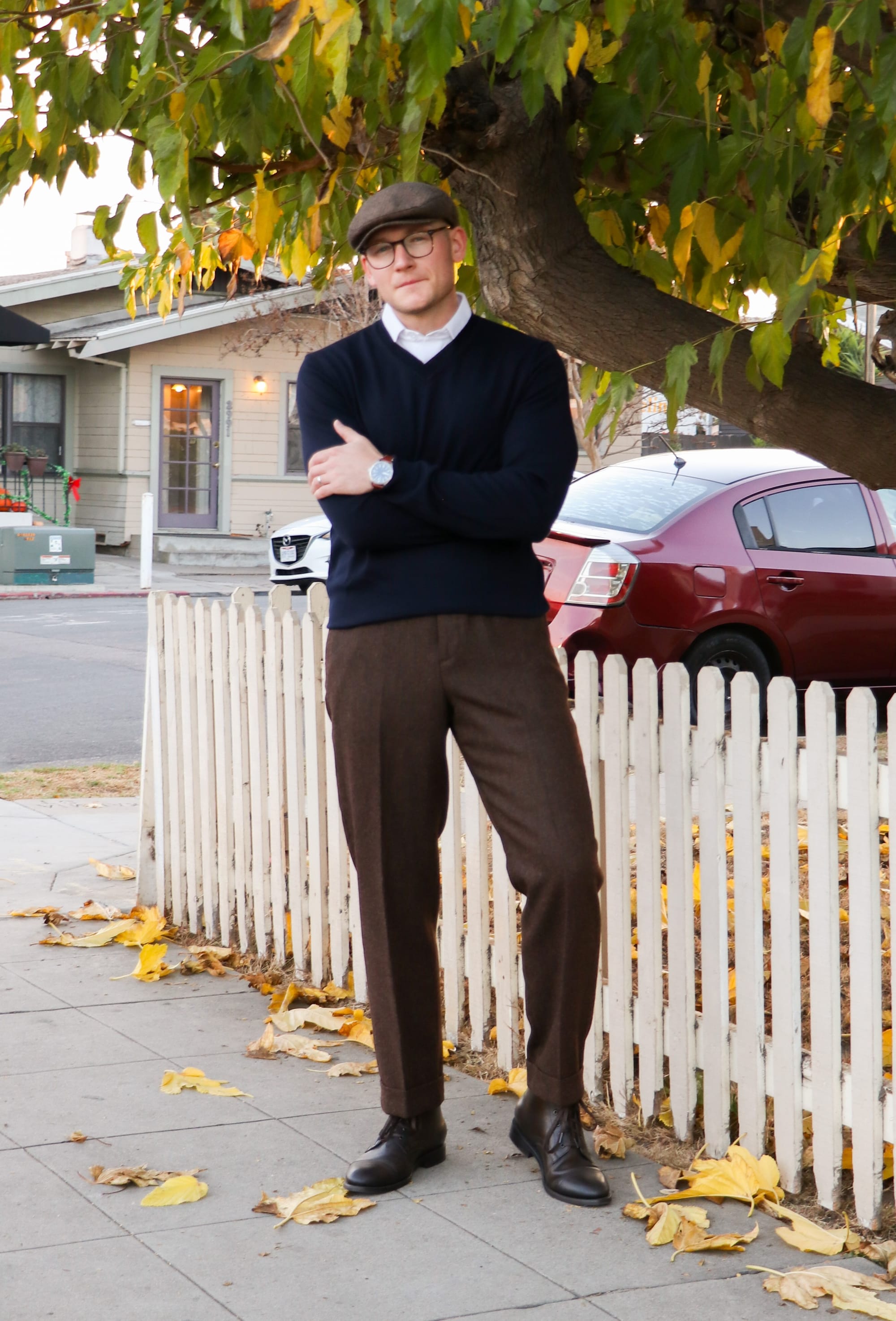
The same concept applies to this type of suit. You get an excellent sport coat and a fantastic set of odd trousers that look great with other neutral-colored pieces, particularly those rich in texture and pattern.
Know What You Need & Want Ahead of Time
Carefully consider the type of suit you want or need, such as a two-piece or three-piece suit. Choose a suit that fits the occasions in your life and your style, such as a classic navy suit for more formal events or a gray flannel suit for more casual events.
Consider the suit's style, including the number of buttons, vents, and lapel type. Also, consider the fabric and color of the suit, including wool, cotton, and linen options. These factors are often tied to where you live geographically and the weather conditions you experience throughout the year.
Dress Shirts & Accessories
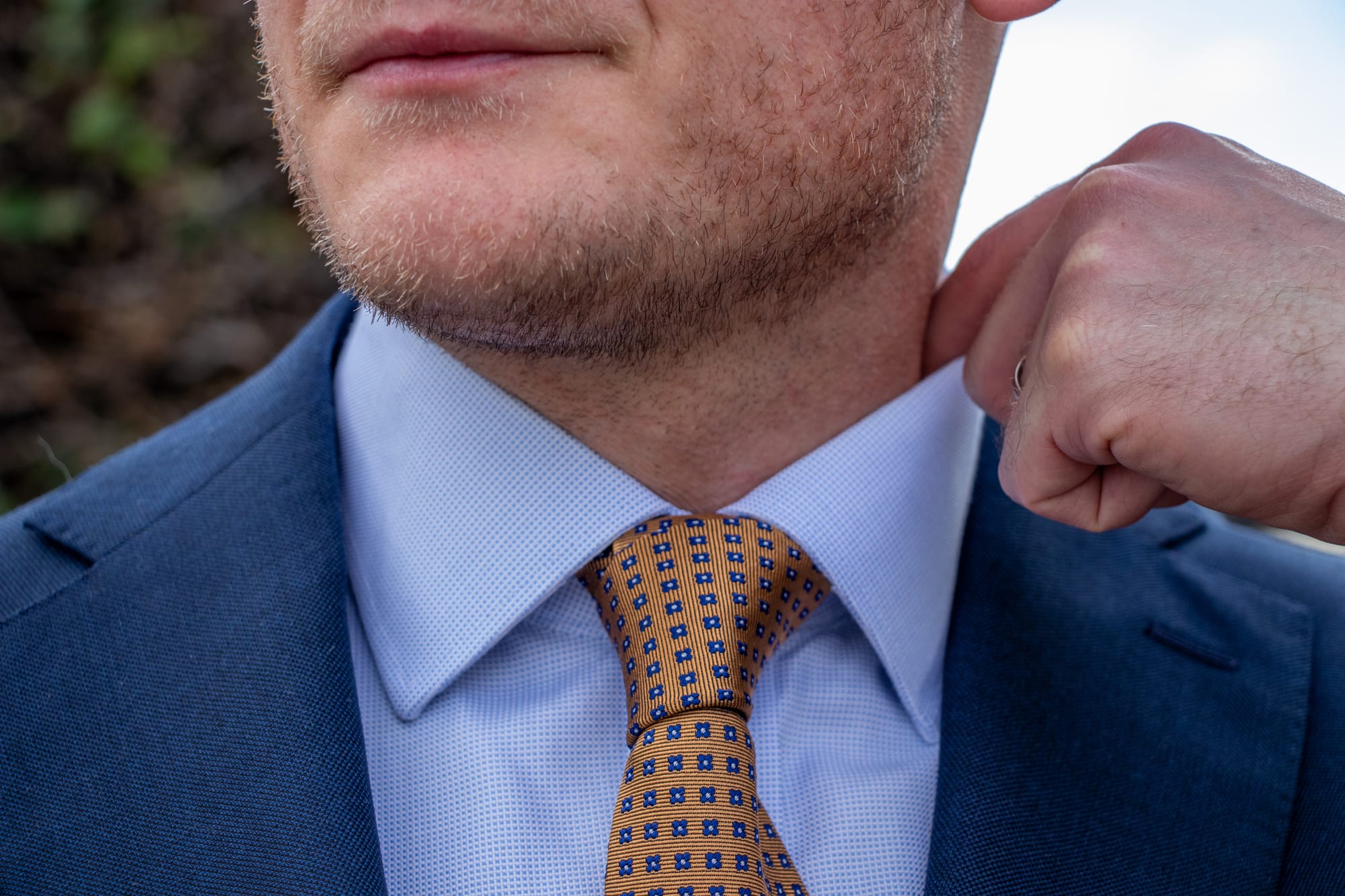
When it comes to dress shirts, do yourself a favor and keep things simple. Patterns are lovely, but they are seldom necessary. I always recommend two types of dress shirts: a crisp white poplin shirt and an ice blue Oxford-cloth shirt. These two shirts will go a long way when just starting out.
Ensure the dress shirt fits well, with enough space between the collar and your neck for two fingers to slide through comfortably. Also, ensure that you have an adequate range of motion in your chest and across your back.
The sleeves of your dress shirt should land at your wrist, barely covering your wristbone. Anything too short will often prove tight, and anything too long will make the shirt look like it's wearing you! Of course, consider the quality of the dress shirt, including the fabric and stitching.
Pocket squares are also nothing to sweat too much about. Get yourself a 100% cotton white or ice blue pocket square (or both if you're feeling up to owning two) and focus on different ways of folding it.
Again, this guide is about doing more with less; every gentleman should begin by mastering this principle.
Mind the Fit (& Be Comfortable)
A suit must not only look good but also be comfortable. Anyone who says every suit will feel tight, stuffy, or uncomfortable has never truly worn a suit tailored to fit correctly. Investing in a versatile suit with a perfect fit (or close to it) is certainly possible.
If you're like me and have naturally broad shoulders, consider a made-to-measure suit that allows you to remove padding from the shoulders. This will help you move more freely and draw attention to your naturally broad features.
If you have smaller shoulders, consider opting for extra padding (via shoulder pads) and more structure in your suit. This means that despite not having naturally broad shoulders, investing in a suit that flatters you by creating a handsome V-shape with extra canvassing will enhance your overall silhouette and confidence.
WHEN BUYING A SUIT ONLINE
Don't get suckered into buying a suit online based on how the model in the image looks. Remember, brands are companies trying to make money, and just because that handsome fella in the marketing looks exquisite in the suit you're eyeing doesn't mean that you will look the same (trust me, I have been there myself).
Know yourself and what you need first. Remember the key principles I have discussed throughout this guide. Unless you have a lot of money, buy a suit that can work well on its own or be divided into separates.
Research the online retailer and read reviews before buying. Ensure the retailer offers a good return policy and exchange options. Consider the quality of the suit, including the fabric and stitching; how much of it is wool, cotton, or linen, and how much of it is polyester or viscose?
The quality of fabric should always match the offer price; if it doesn't and you have a lingering feeling in your gut that you might not be getting the best bang for your buck, stop admiring how good that model looks on the website and move along (trust that gut of yours and refrain from knee-jerk reactions).
Buying suits online can be hit or miss if you attempt to find something off-the-rack. You can often speak to sales associates who can answer questions and help guide you. Of course, this depends on the brand, but as long as you are armed with the proper knowledge upfront, the sky is truly the limit.
Proper Suit Care & Maintenance
Whether you bought it from the local menswear department store or a reputable custom brand, you must understand how to properly care for your suit to maintain it as a workhouse staple in your wardrobe.
HANG YOUR SUITS ON A SUIT HANGER (BUT NOT JUST ANY HANGER)
Never hang your suits on a standard plastic or wire hanger. Instead, invest in a dedicated suit hanger with rounded shoulders that match the contours of your suit's shoulders. This will help maintain the structure of your suit and aid in lengthening its lifespan. It will also allow the suit to hang so wrinkles and creases can fall out naturally.
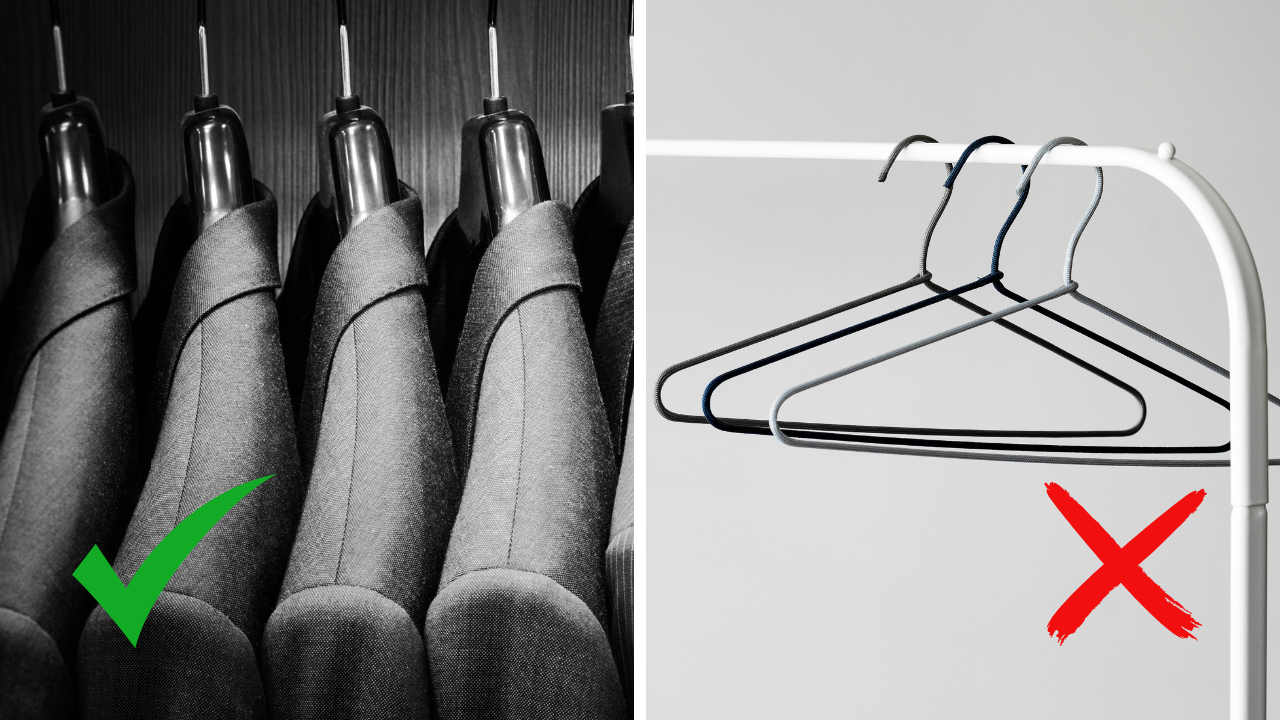
COVER YOUR SUITS
Hopefully, your suit will come with a garment bag. If not, get one as soon as you can! Unfortunately, even some of the best brands offer cheap plastic suit bags (looking at you, Suit Supply and Brooks Brothers).
Do yourself a favor and get some cotton canvas or linen bags so that your suit can breathe better. This will also help lengthen the suit's lifespan and allow it to air out after each wear.
WHEN TO DRY CLEAN
Only dry-clean your suit as a last resort. It may sound strange to avoid dry-cleaning your suit. While this process is often effective, it is achieved through the utilization of concentrated solvents that strip a suit fabric of its natural properties and oils that it has in it, significantly reducing the overall lifespan of the suit altogether.
STEAMING IS BEST
Instead of dry cleaning your suits, I recommend steaming them now and again. Simply hanging them naturally will allow the most visible wrinkles to fall out. However, if you need a cleaner look, get a good steamer from Amazon, and be sure to use it with distilled water so that no impurities are present!
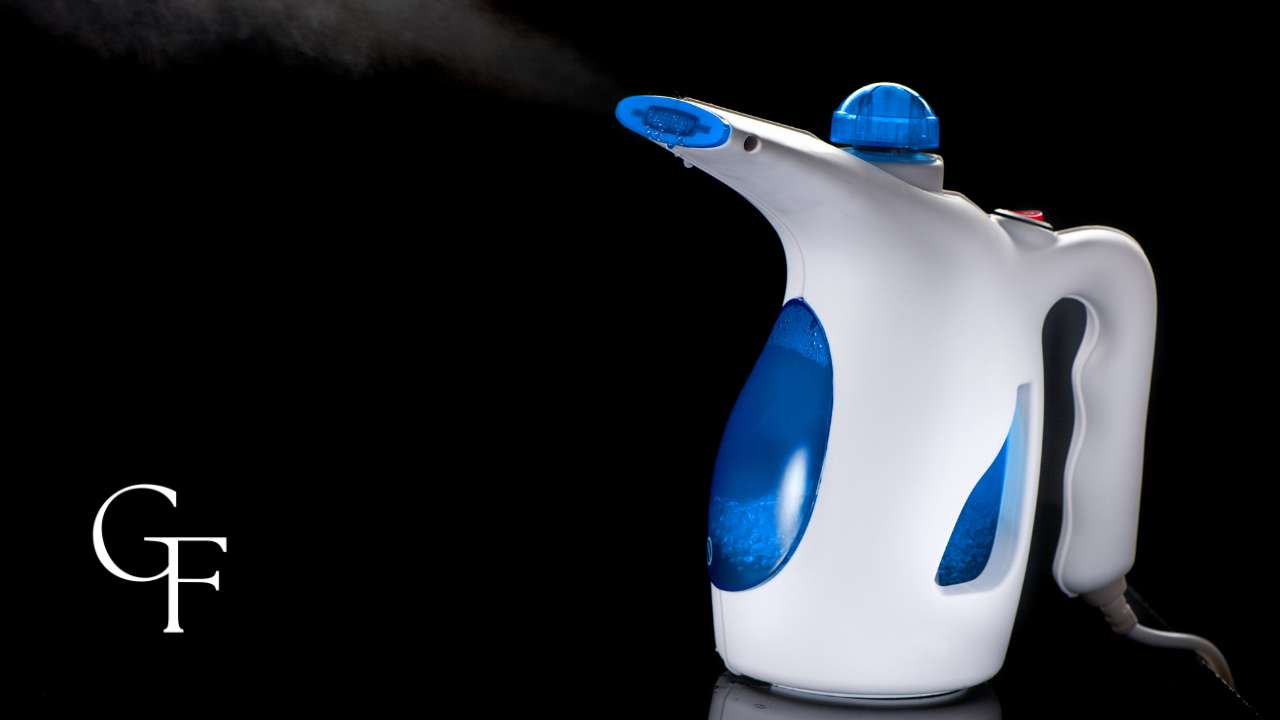
IRON WITH EXTREME CAUTION
Do your homework before ironing your suit. Your fabric choice will ultimately dictate the temperature at which you must press it. Ironing is a risky business, especially for suits.
I'm among those who will tell you never to put your iron directly onto the suit fabric unless you have a pressing cloth to serve as an extra layer between the iron and the fabric or a Teflon cover to go over the iron's heating plate.
Burning your suit is a bad day, and while there are dedicated irons that allow you maximum control over the temperature, a good one will cost you a lot of money. As we say in the military, "Plan your op; then op your plan."
DEALING WITH STAINS
If you wear a suit, you're at high risk of suffering a stain or two. It's inevitable. If you spill something on your suit and end up staining it, always try to deal with that stain yourself first. I recognize that not all stains are the same, and it depends on what dropped onto your suit.
Regardless of what it is, act quickly! You don't want to give the stain time to settle into the fabric.
But let's be honest: You won't catch every stain the moment it occurs. You'll likely notice it later that day, and the damage will likely be done by then.
Remember what I said about dry cleaning as a last resort? Well, this is the time to do so. Dry cleaning your suit once, twice, or thrice won't ruin it, but only do it when you have no other options.
Conclusion
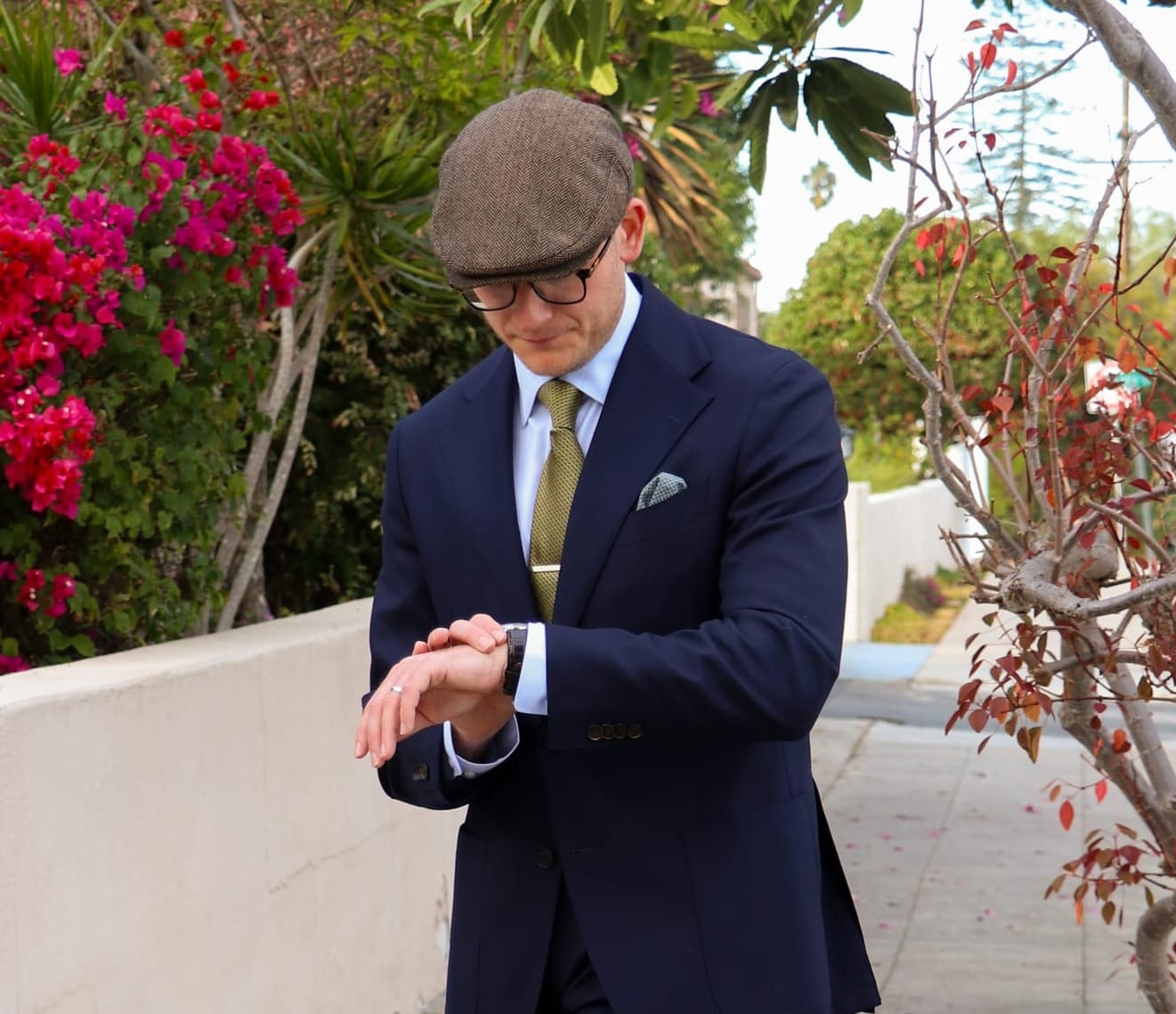
A good-quality, versatile suit is worth investing in and should give you confidence when you wear it, remain comfortable, and easily be divided into effective suit separates.
If you don't like the idea of having a suit that can double as a blazer, sport coat, and odd pair of dress trousers, don't worry. I understand the appeal of wanting something more like a conventional suit.
After reading this comprehensive guide, you should understand what to look for regarding proper fit and buying options that offer competitive pricing and quality. Additionally, you will also understand general suit care.
Good style is timeless and lasts forever. Regardless of what you do in life or where you think you'll end up, every man needs at least one good suit in his closet, so why not select a versatile option that allows you to do more with less? How you fulfill this is entirely up to you, so choose wisely.

